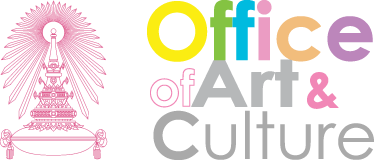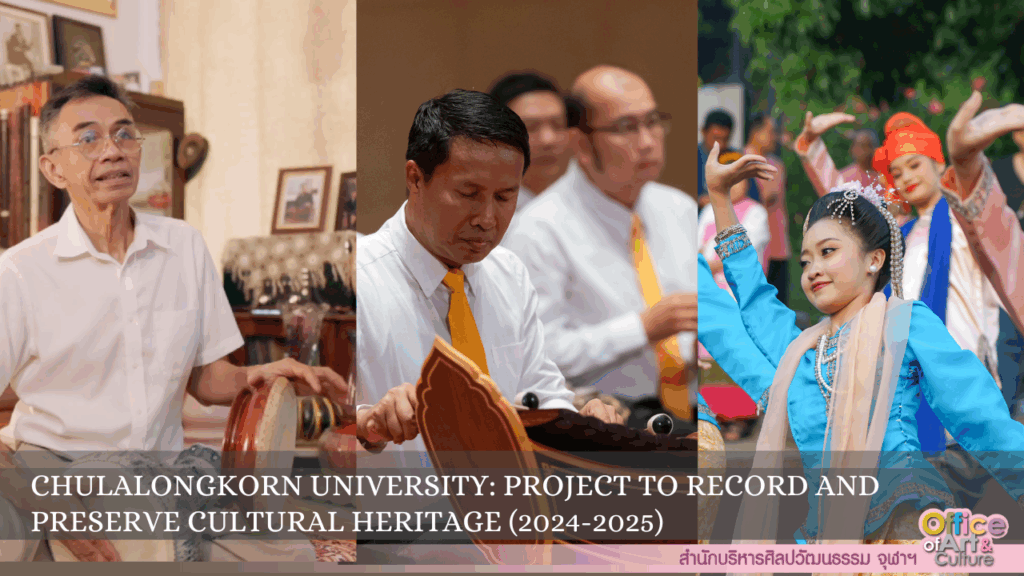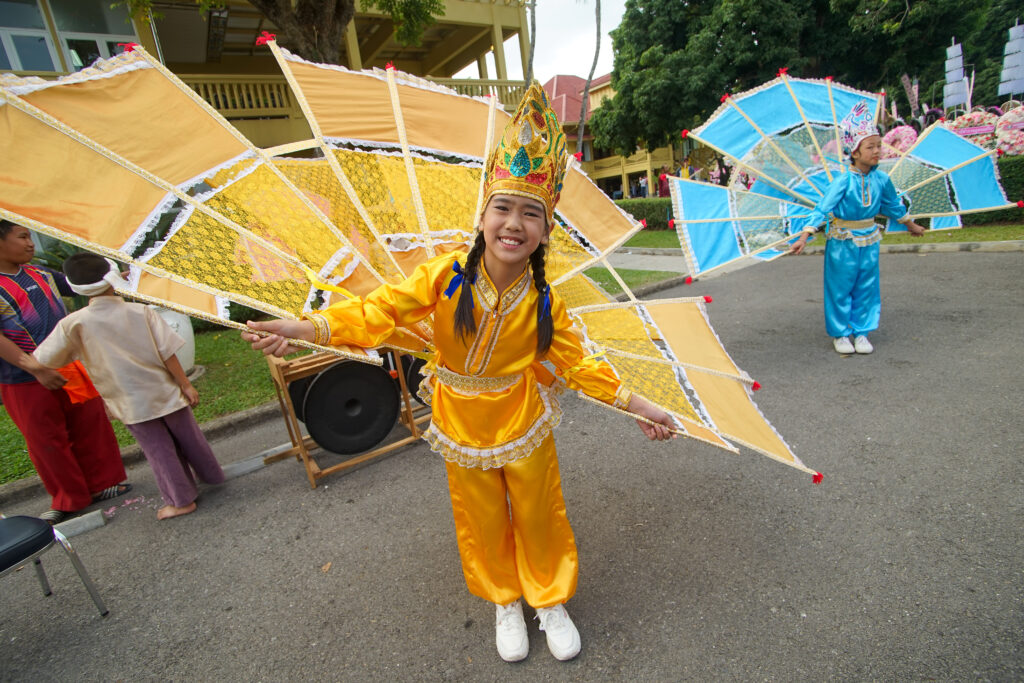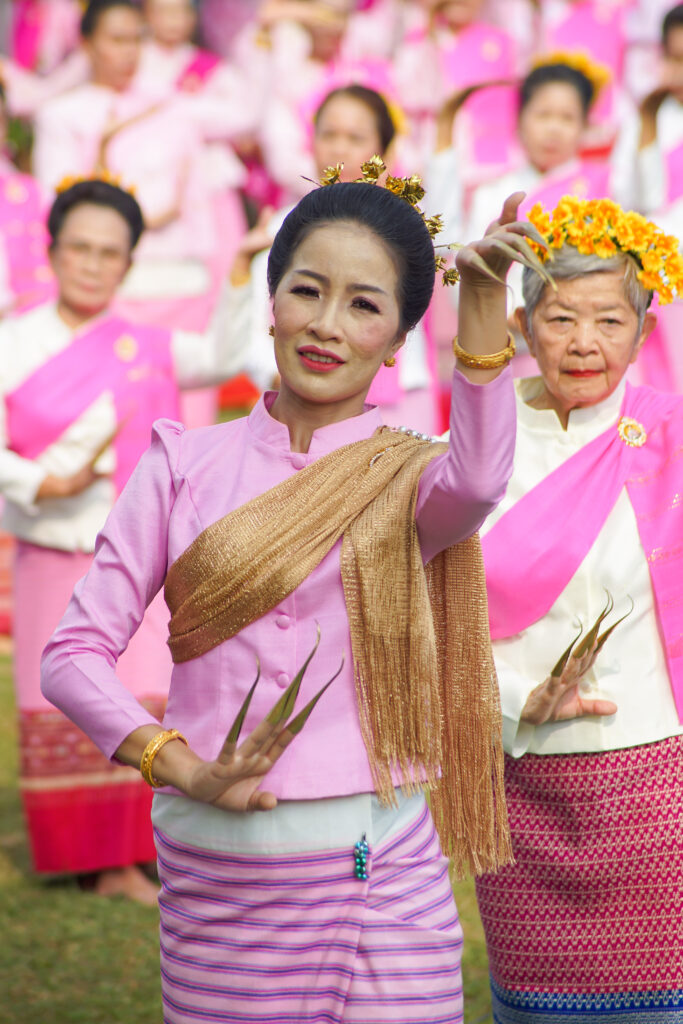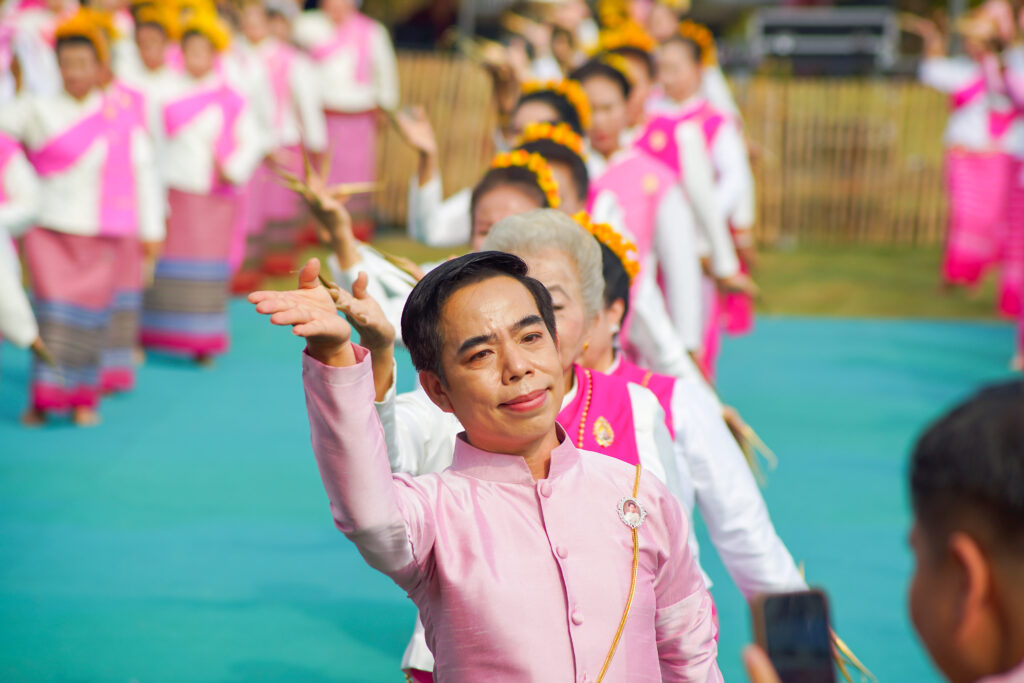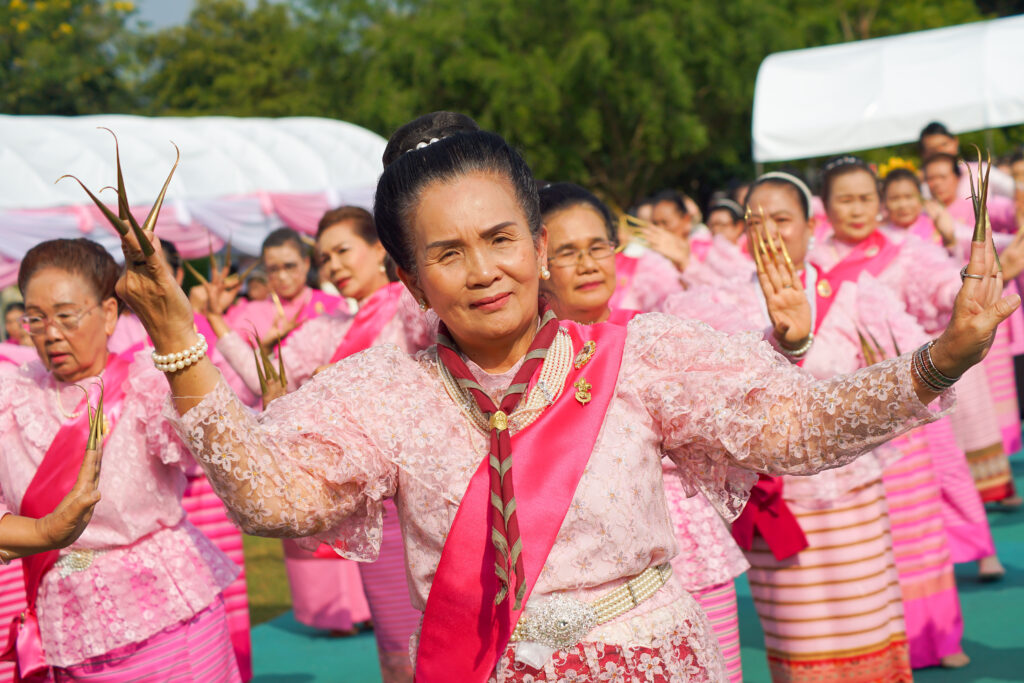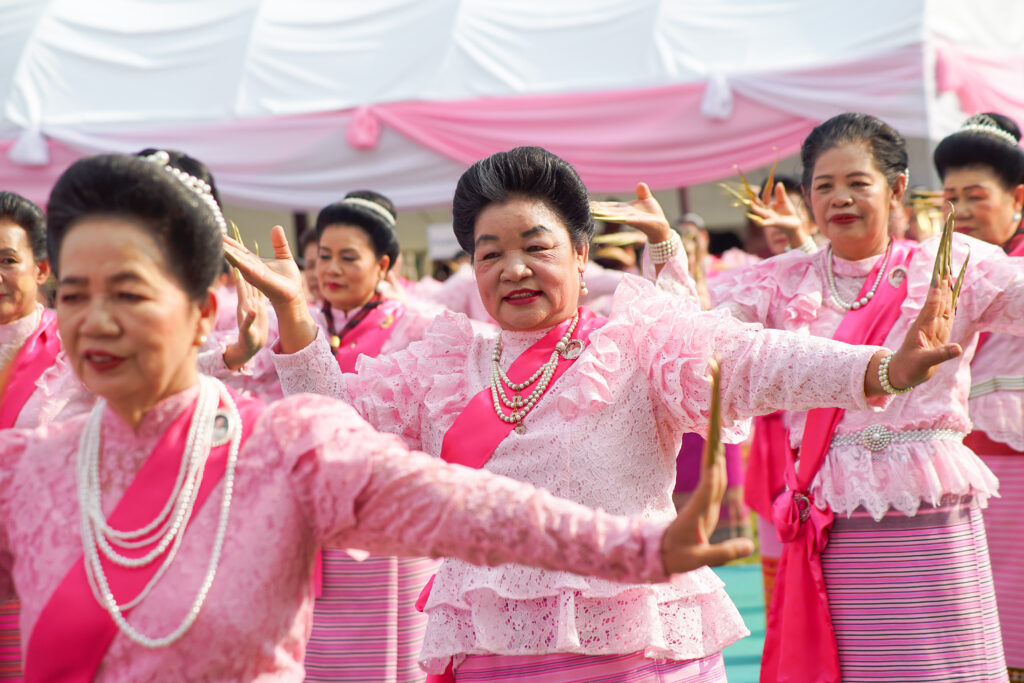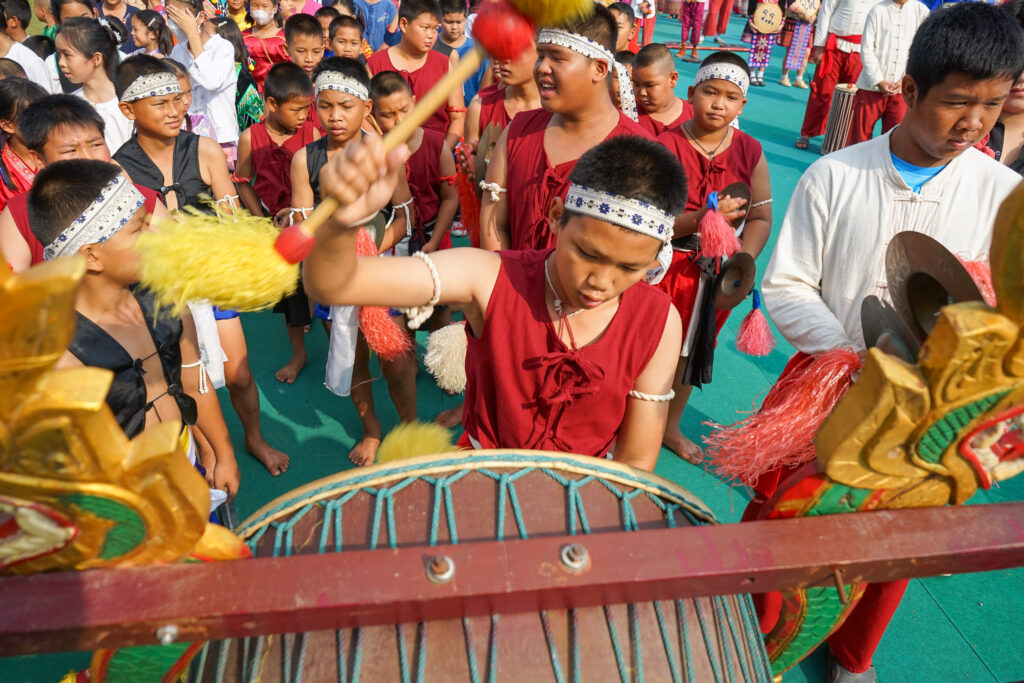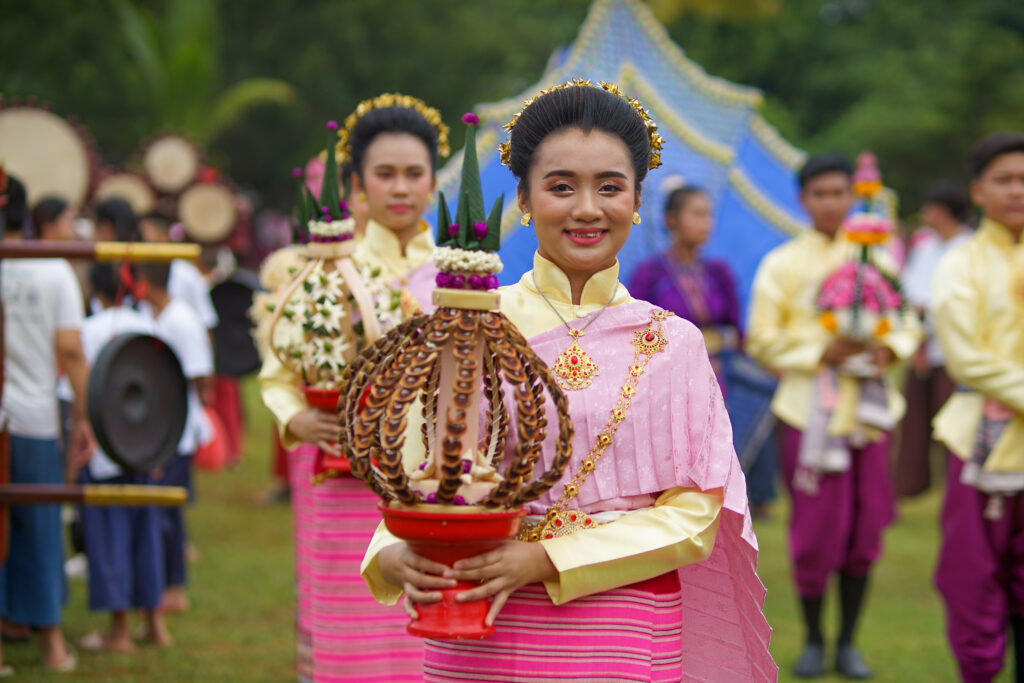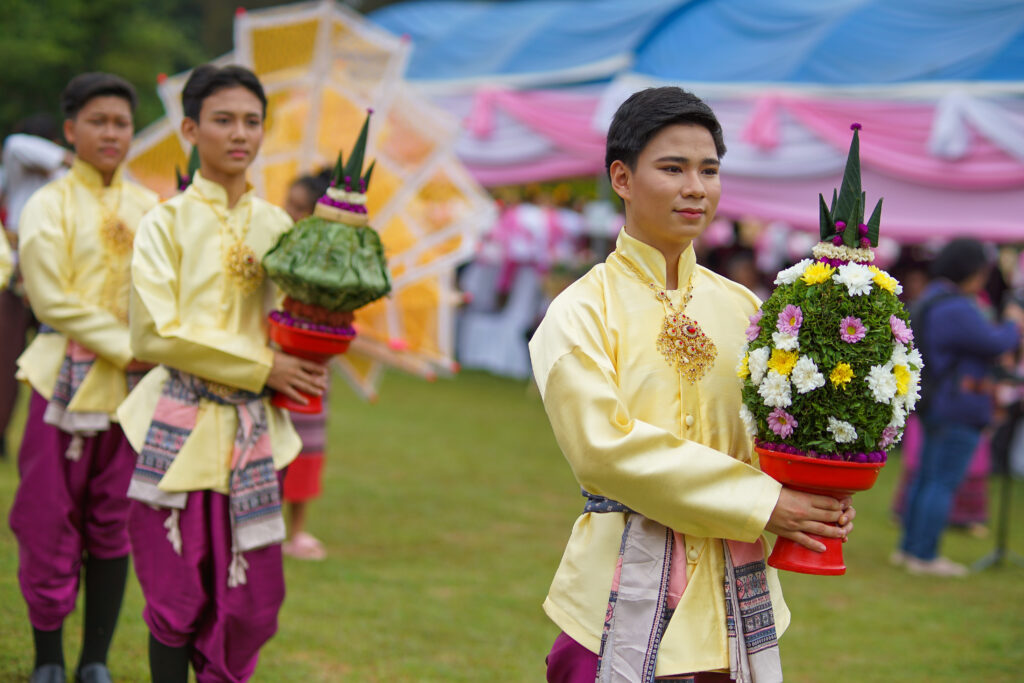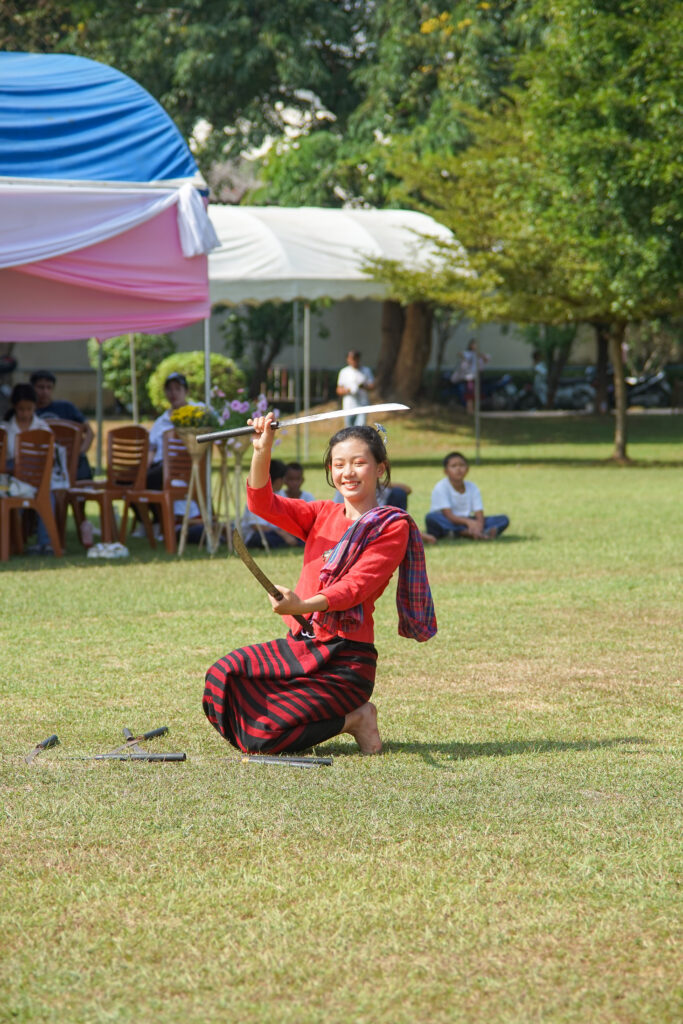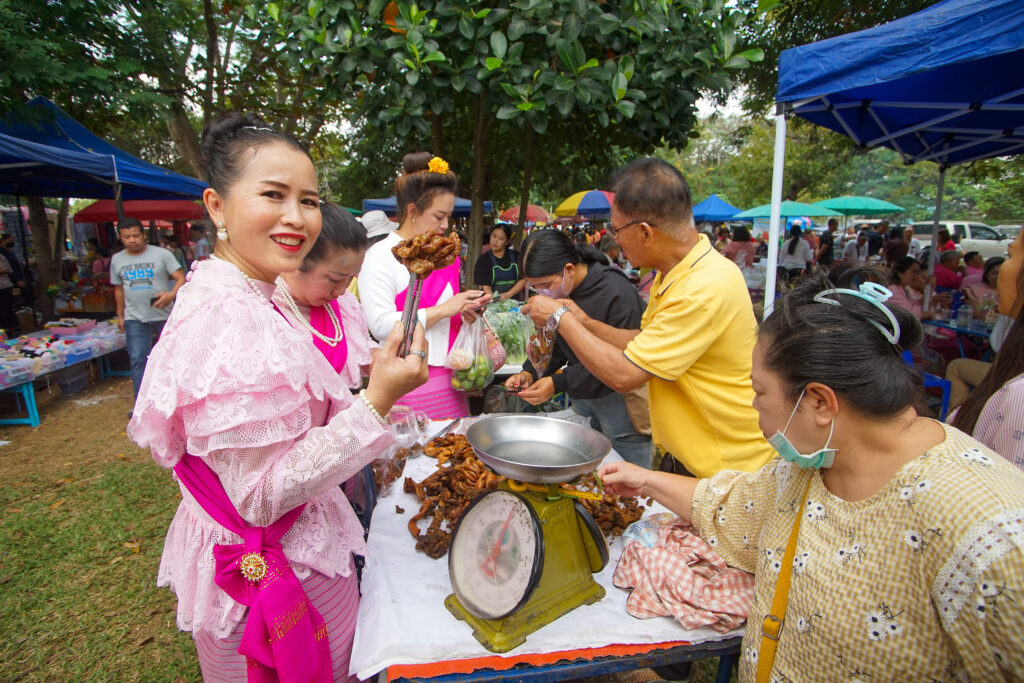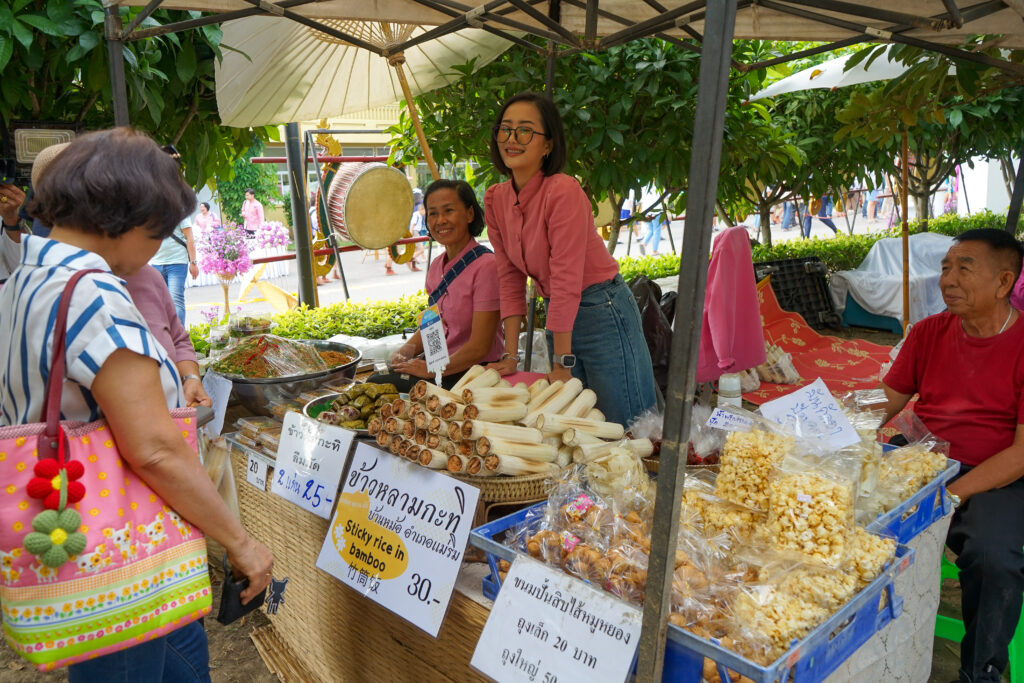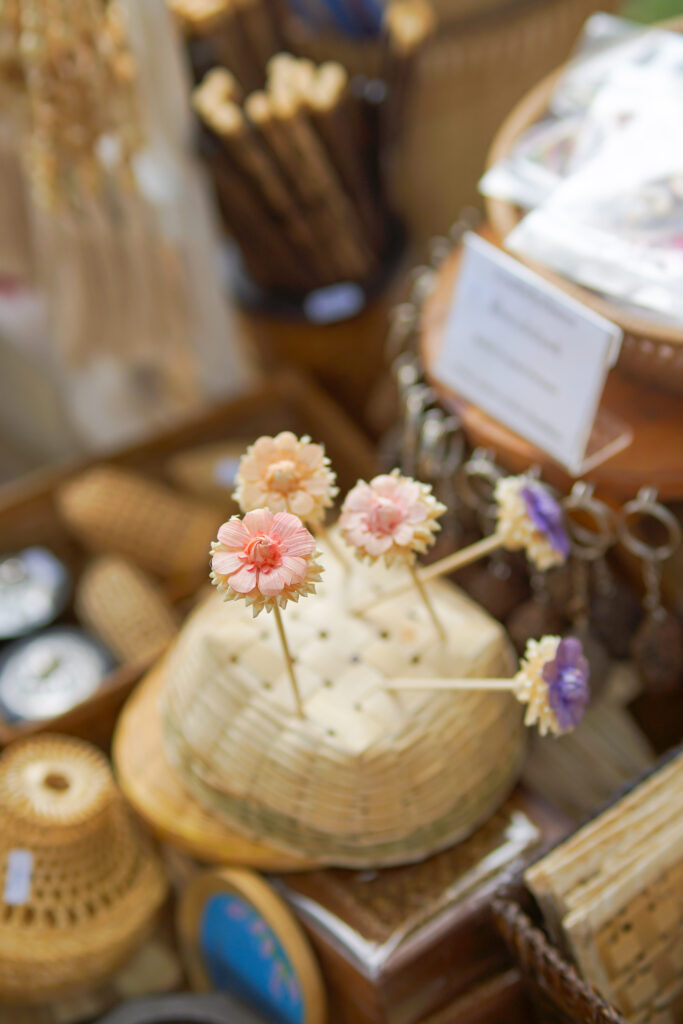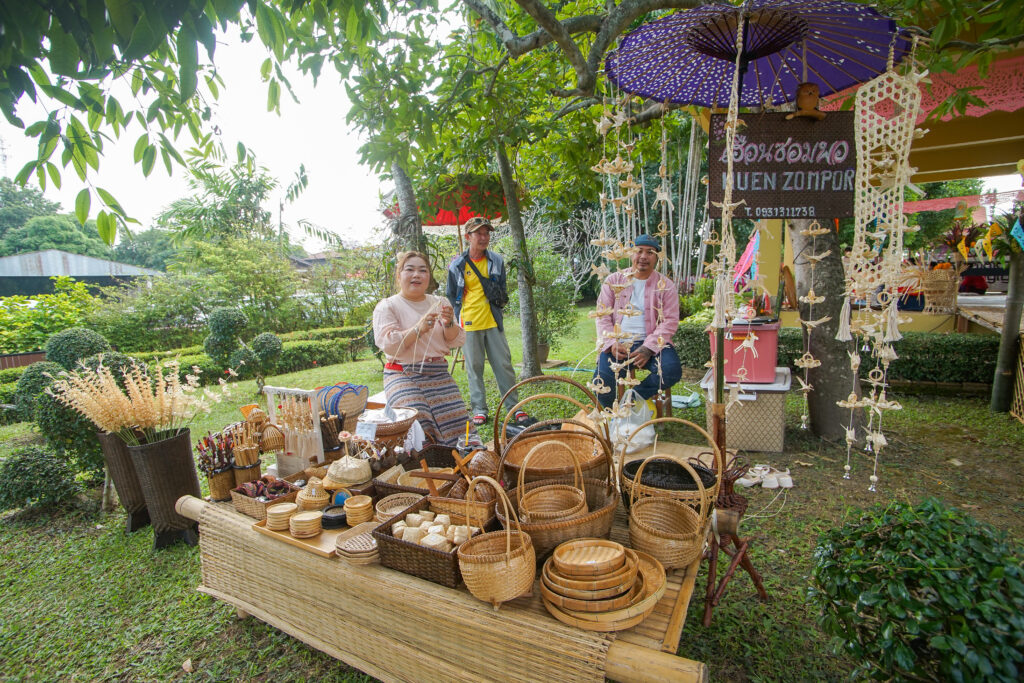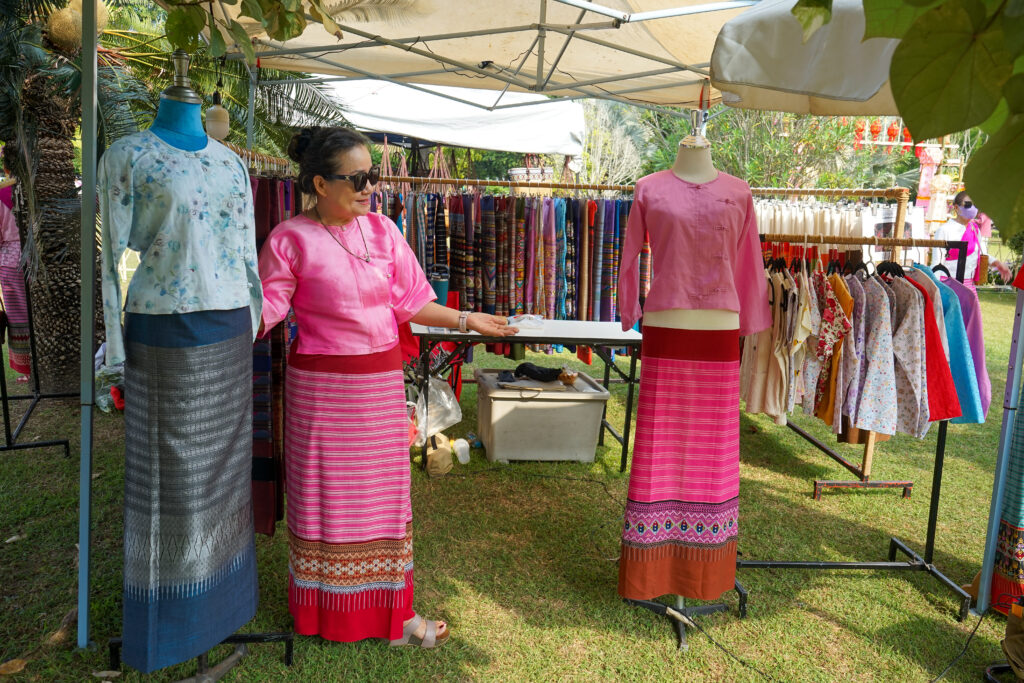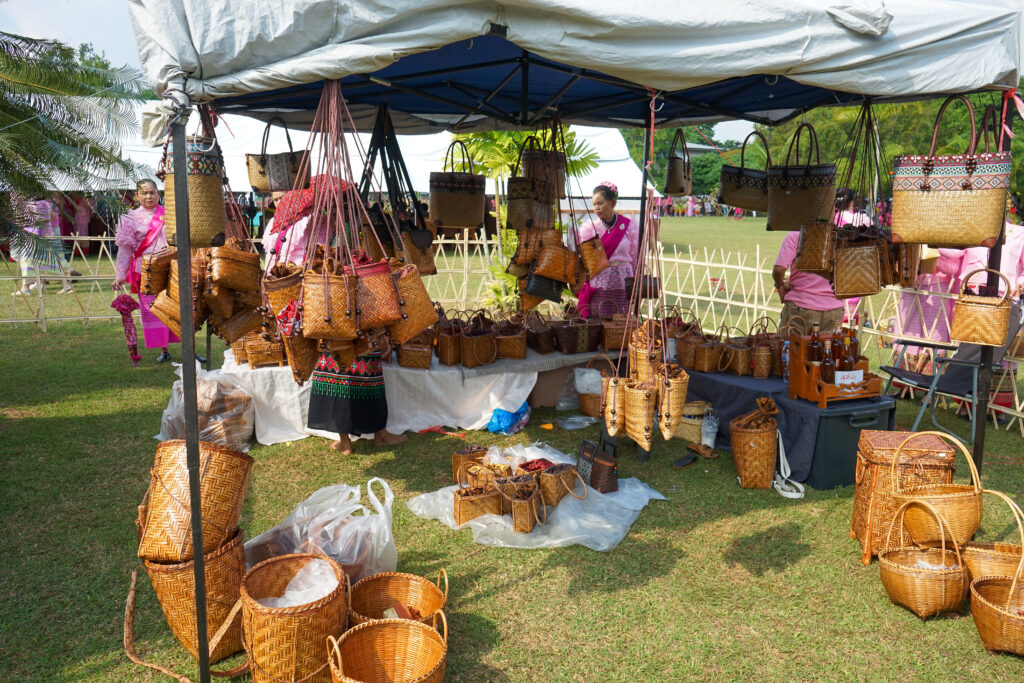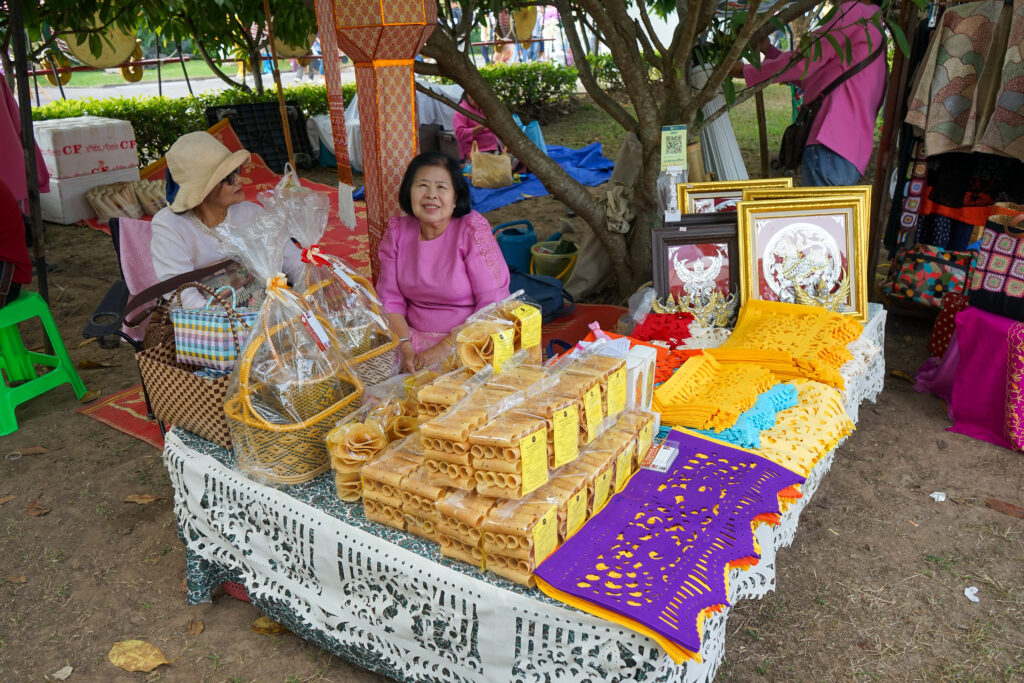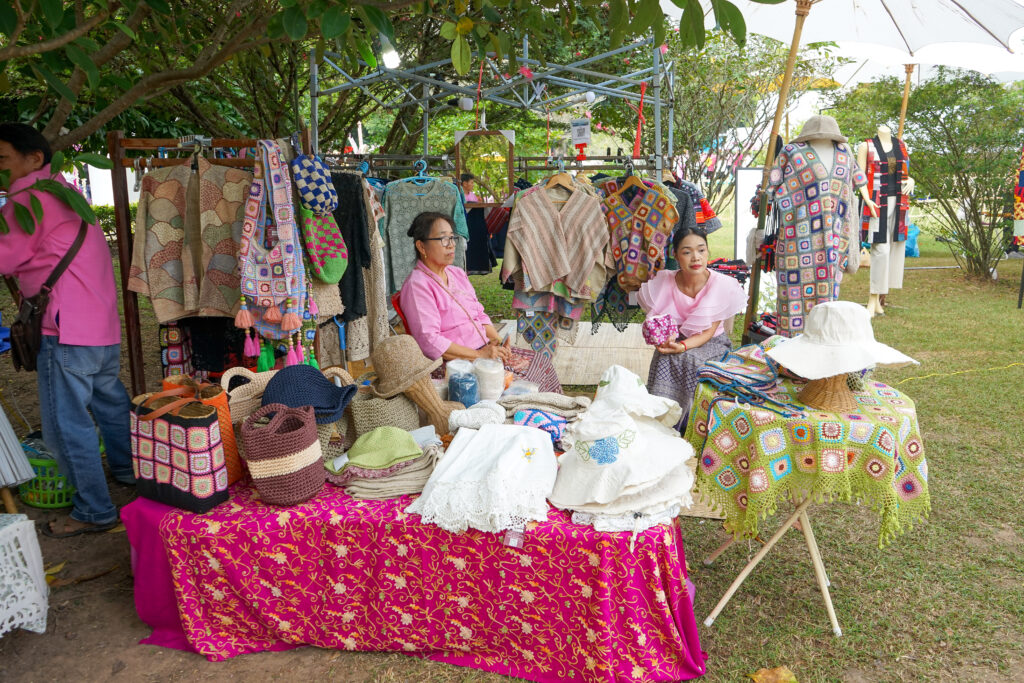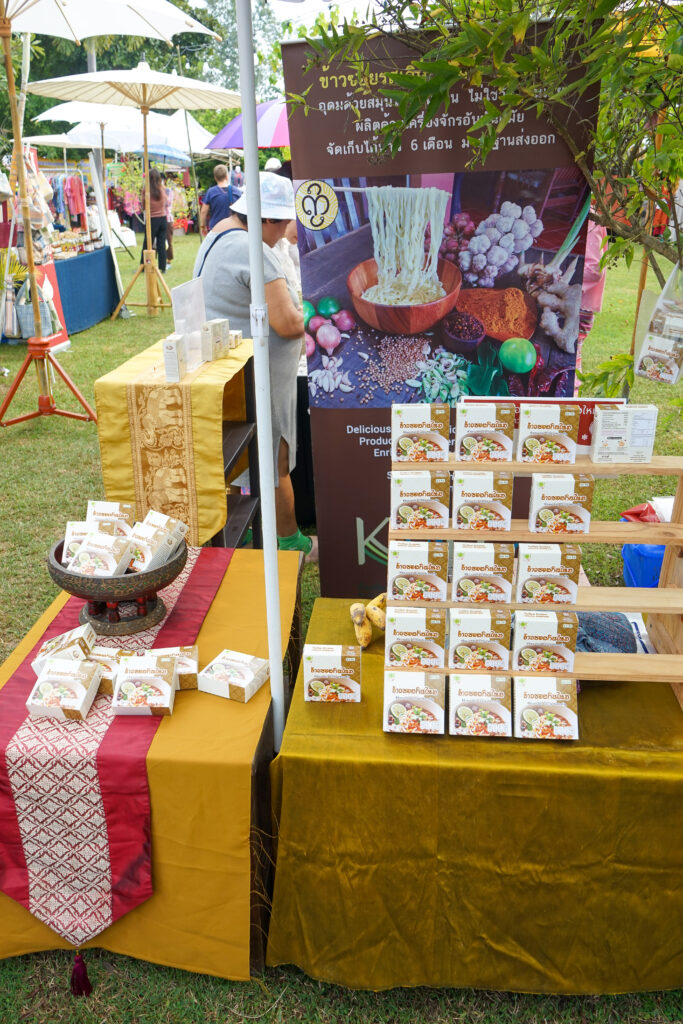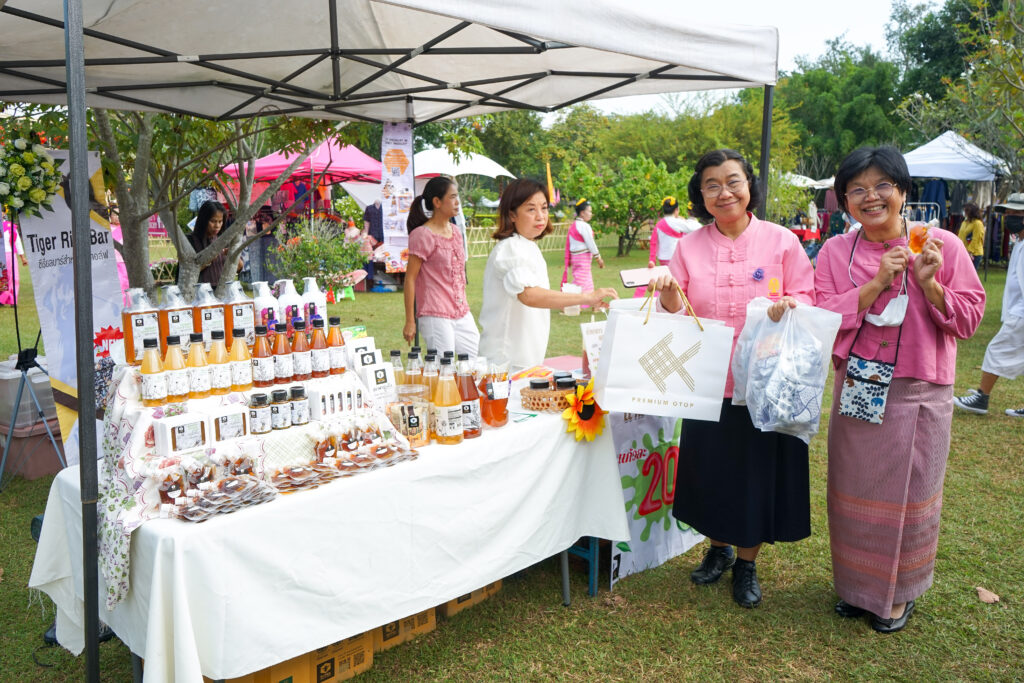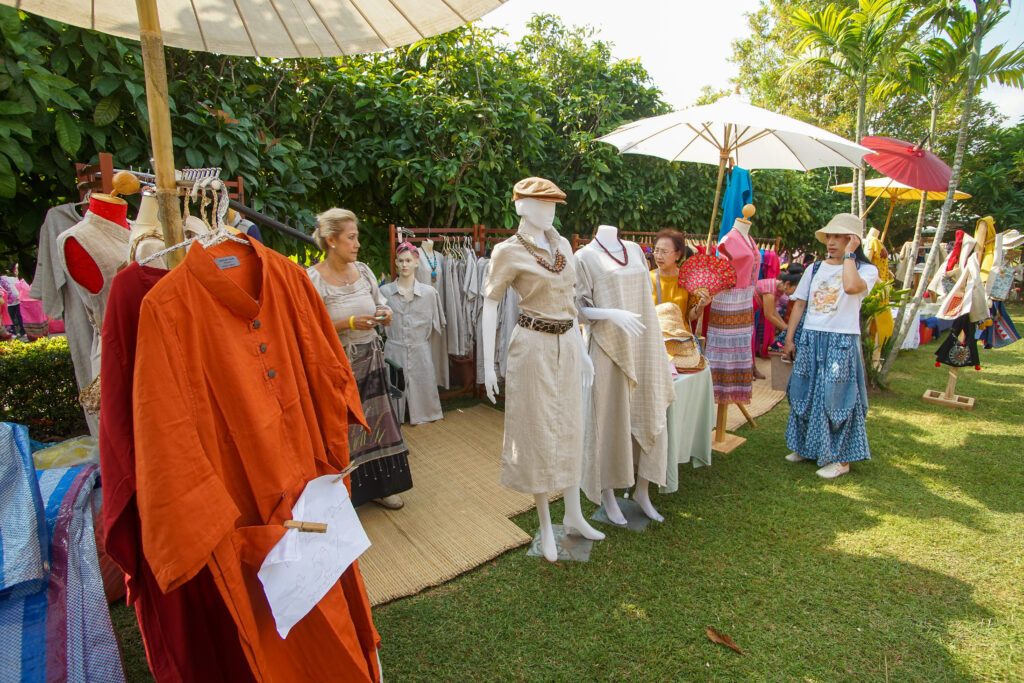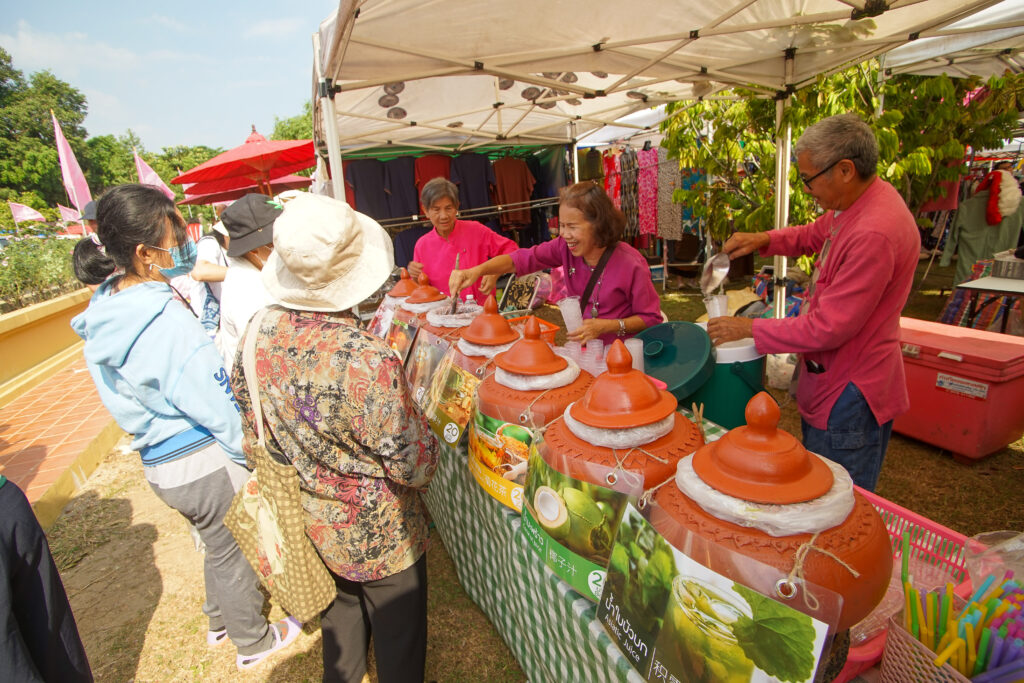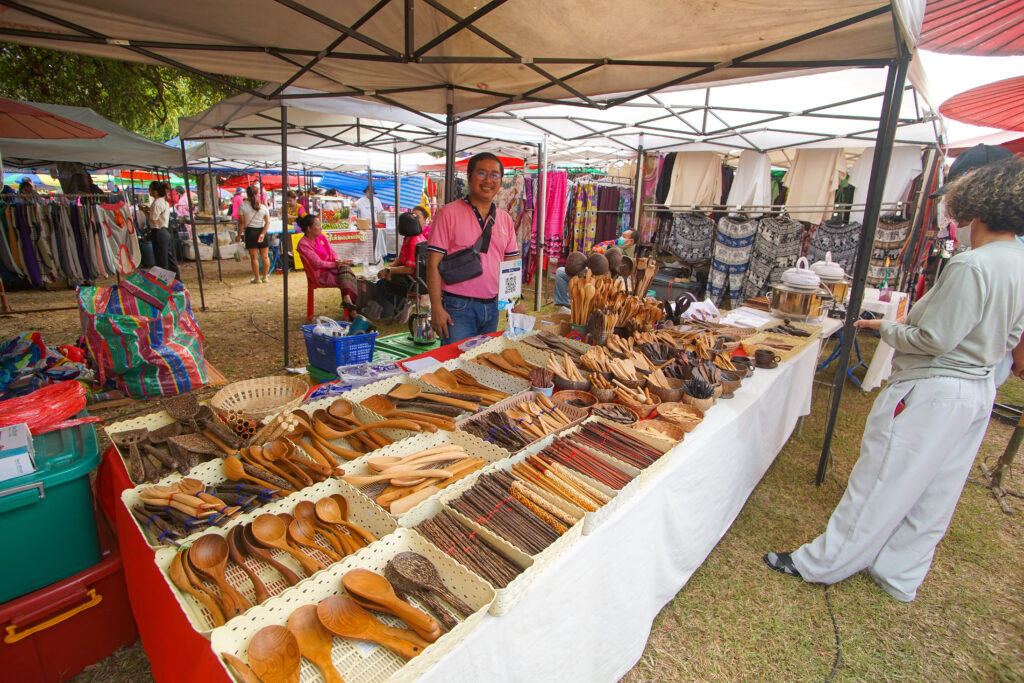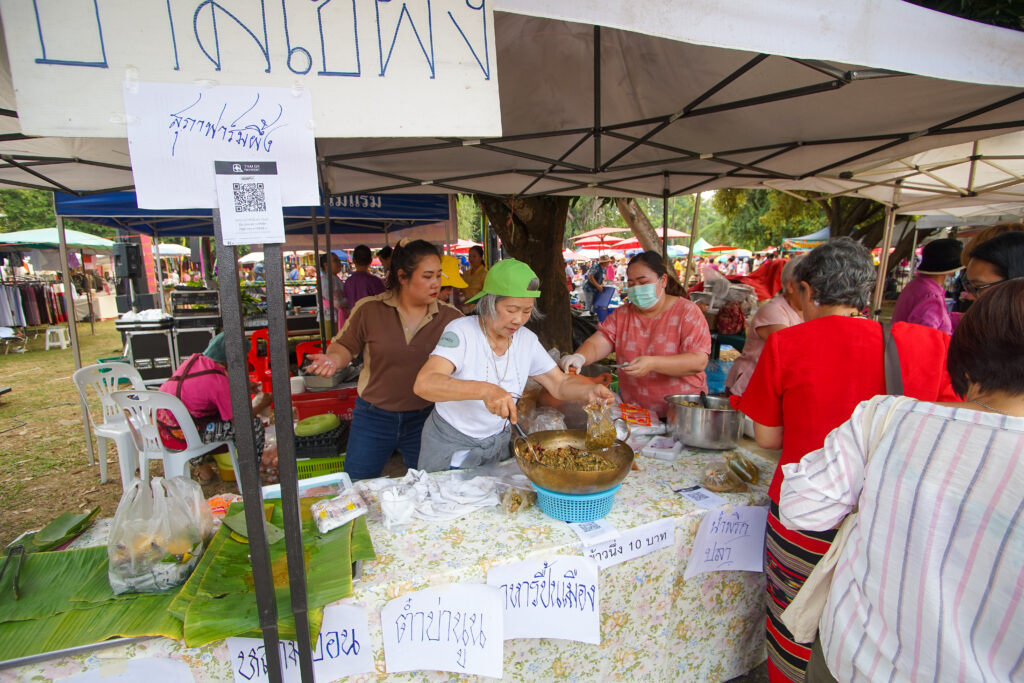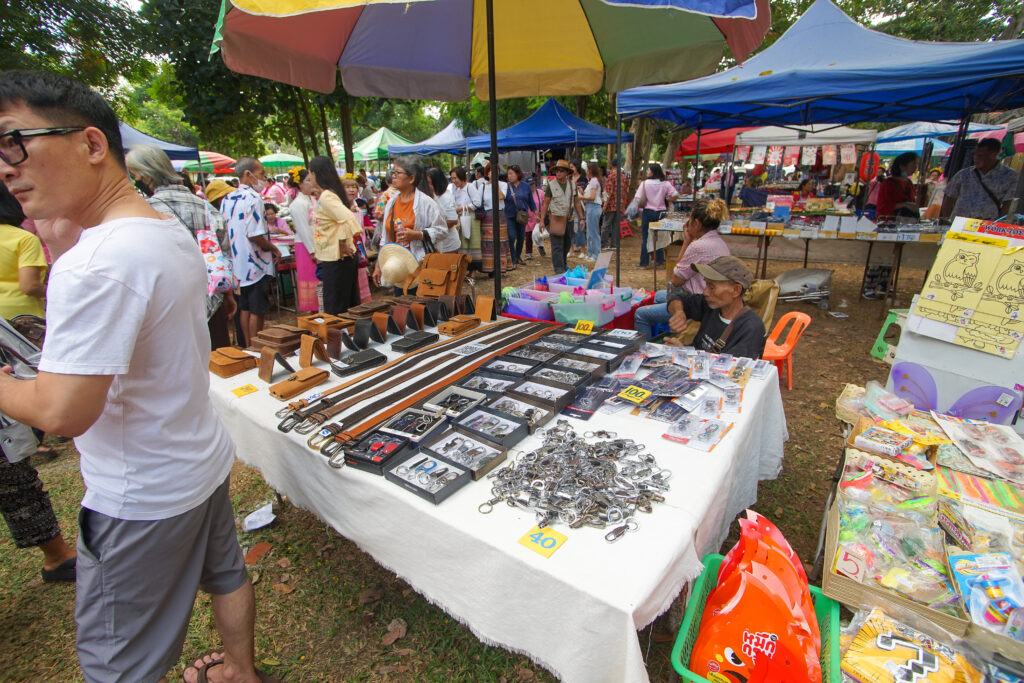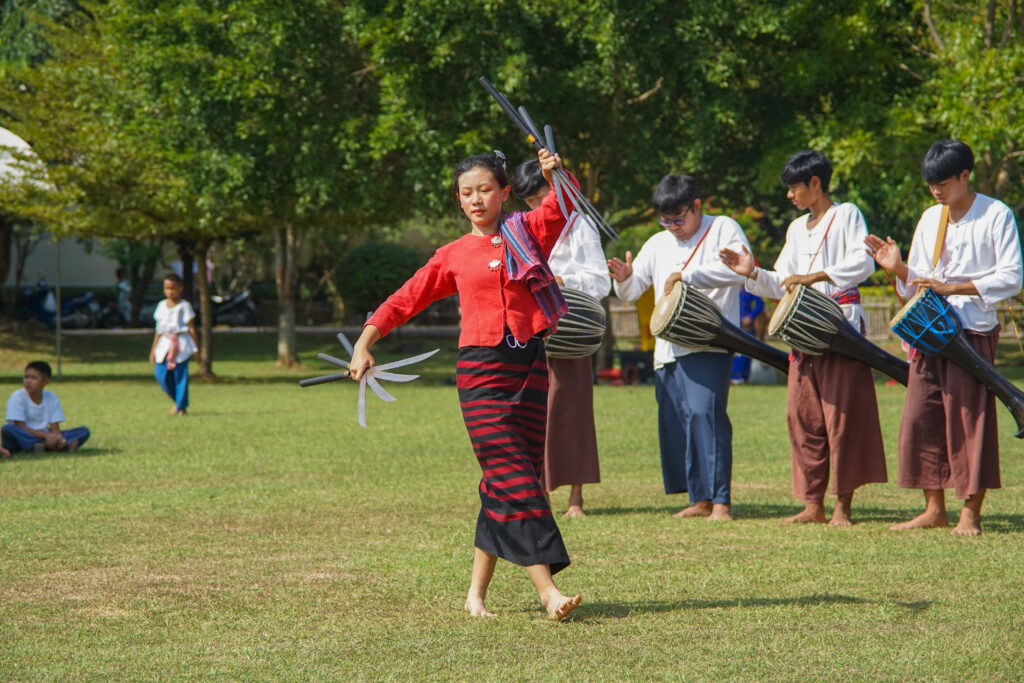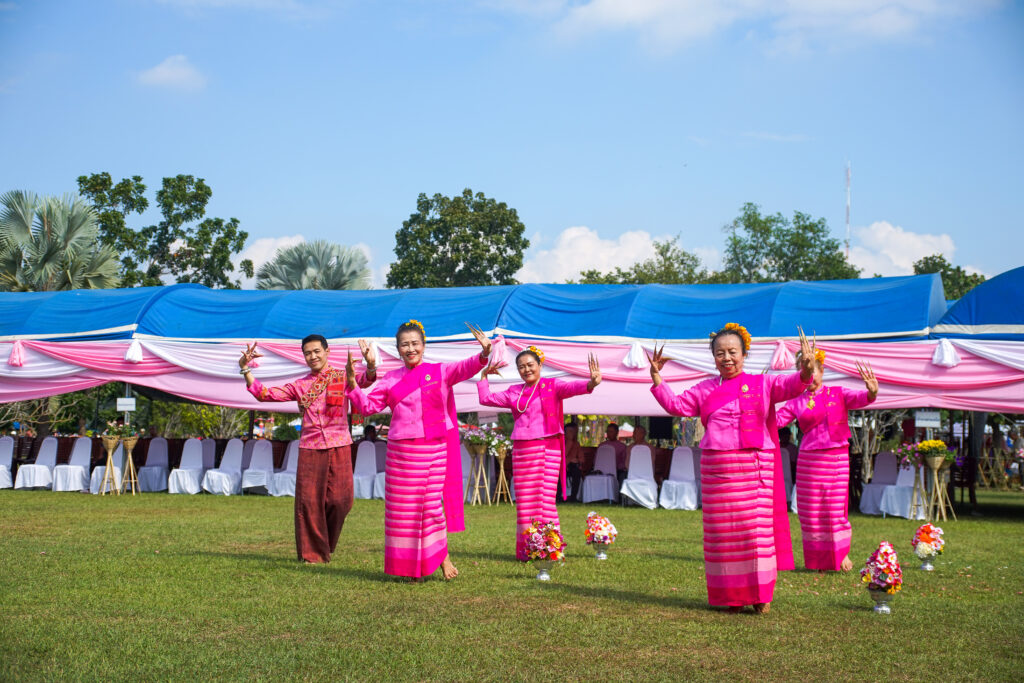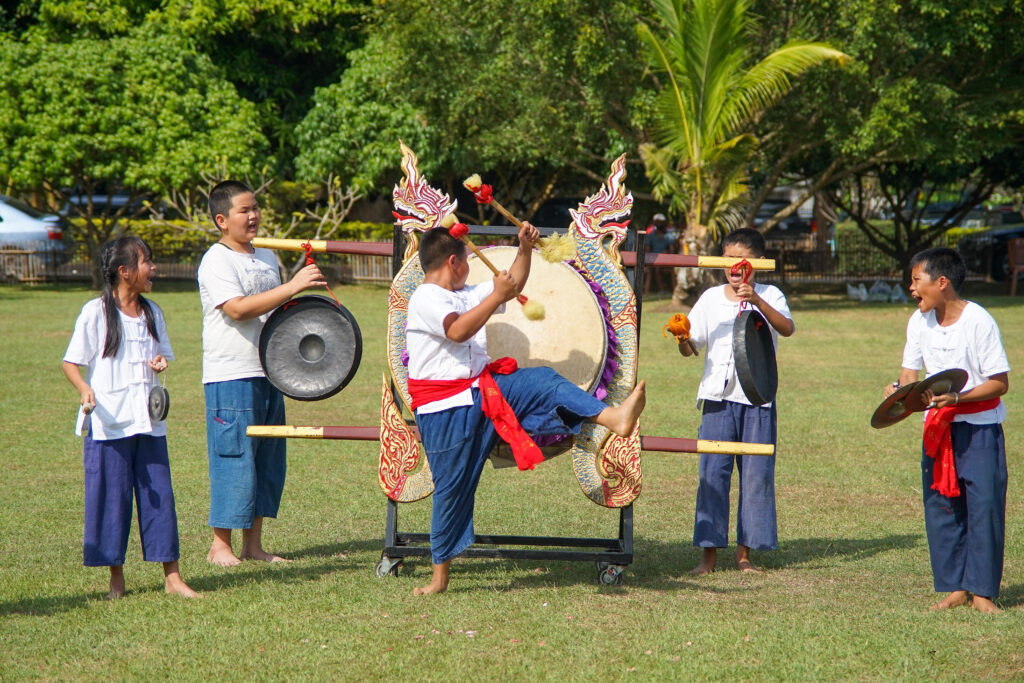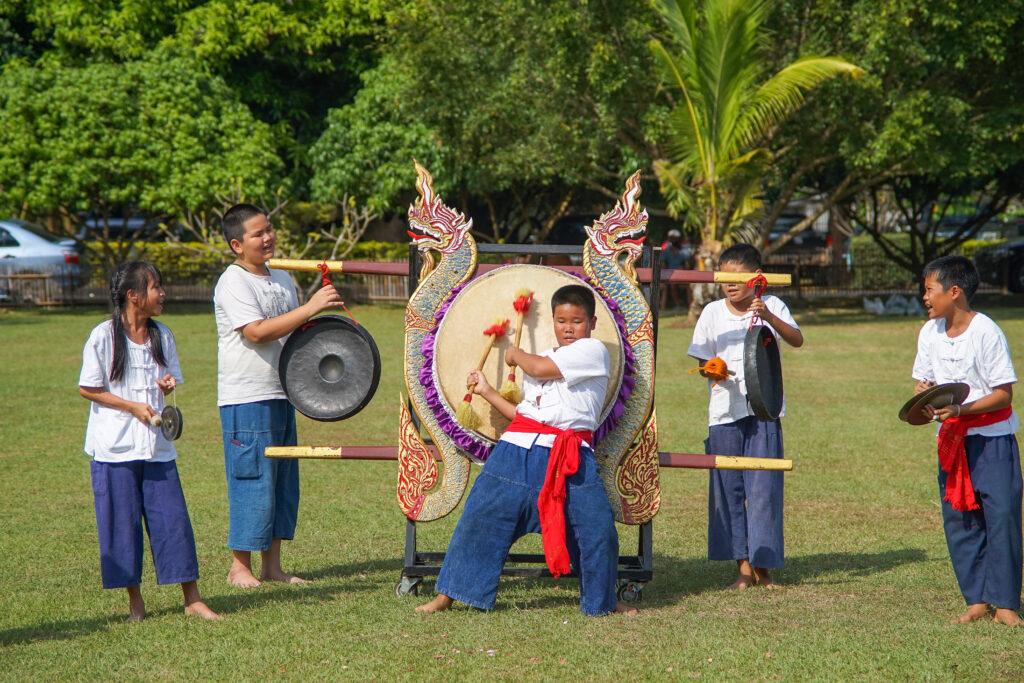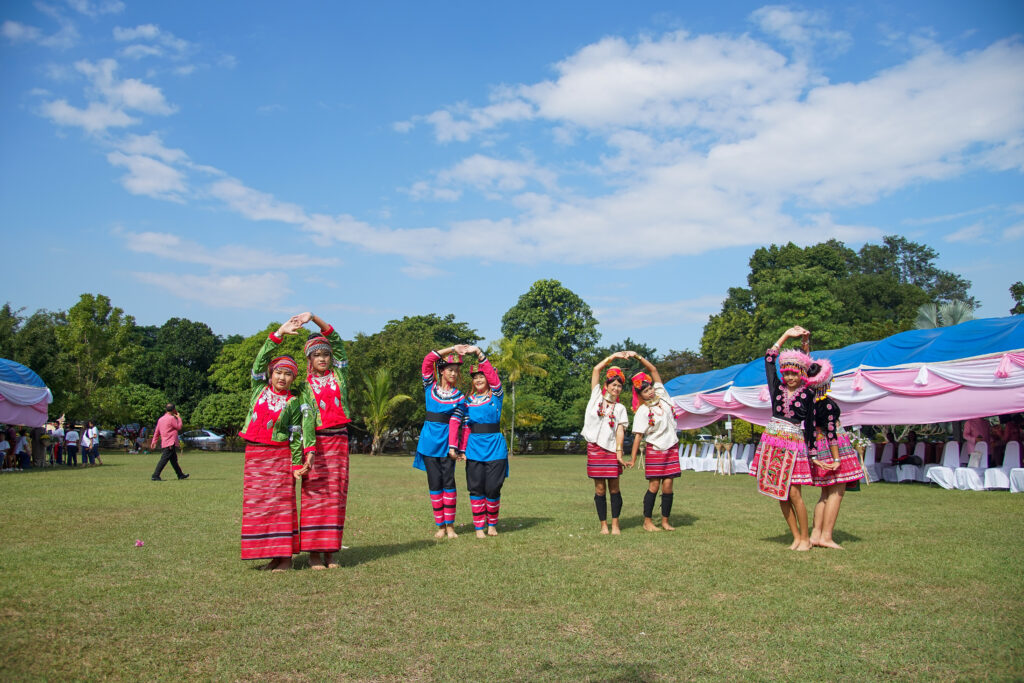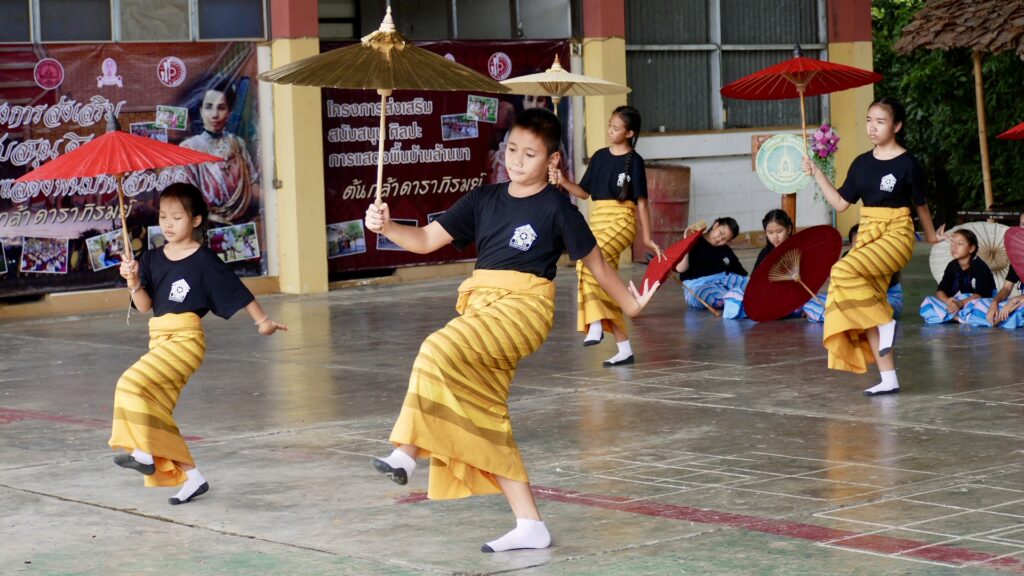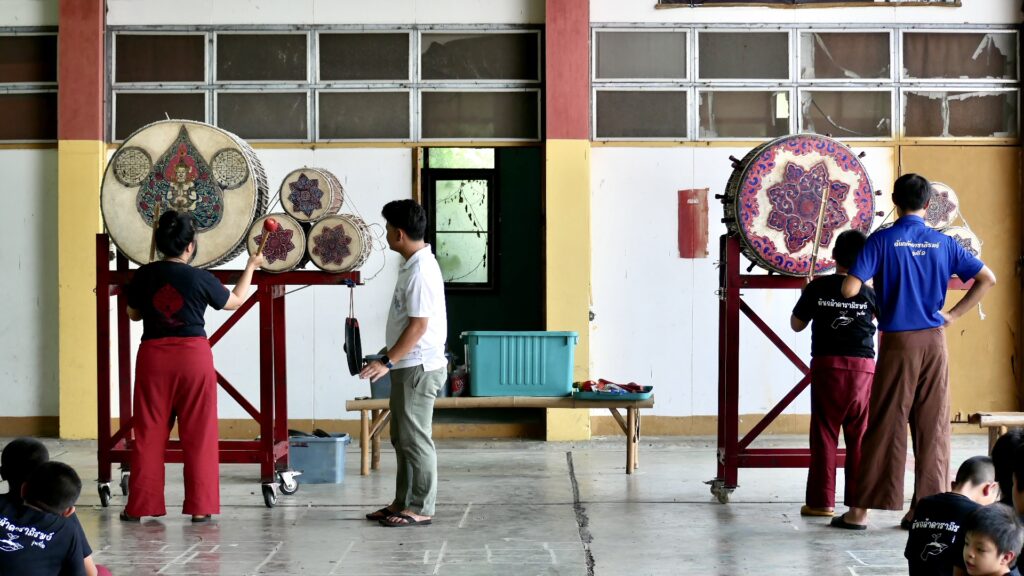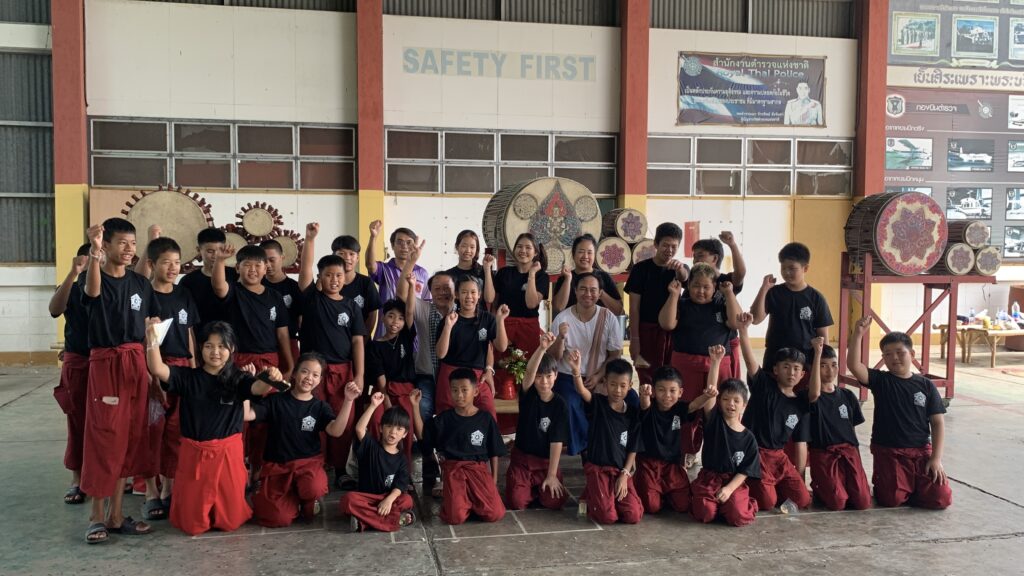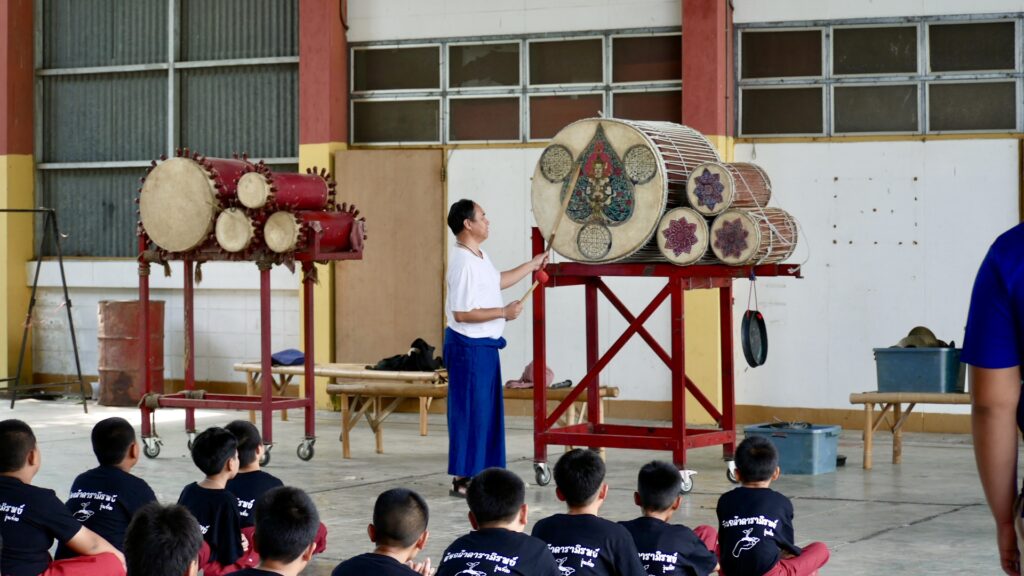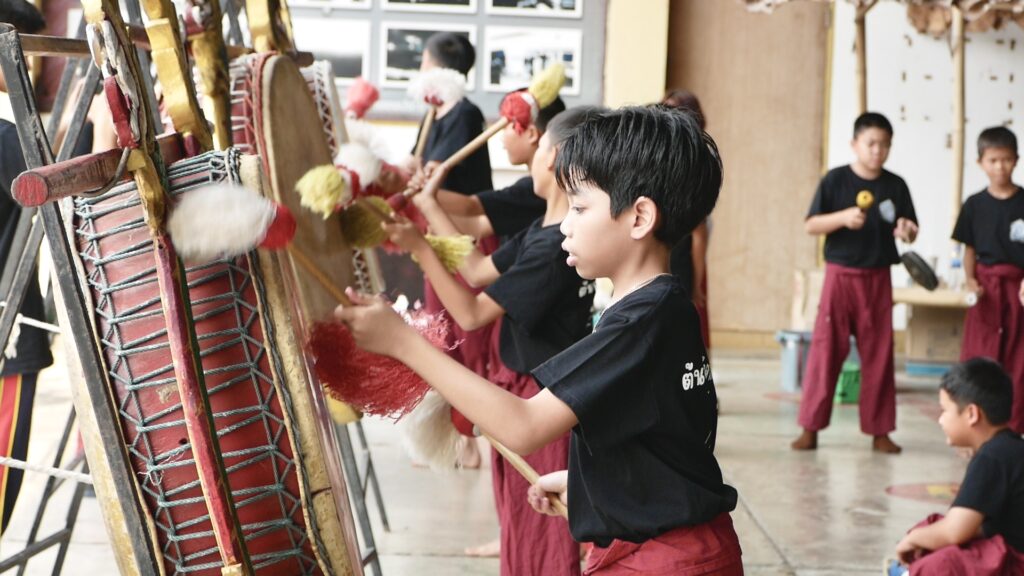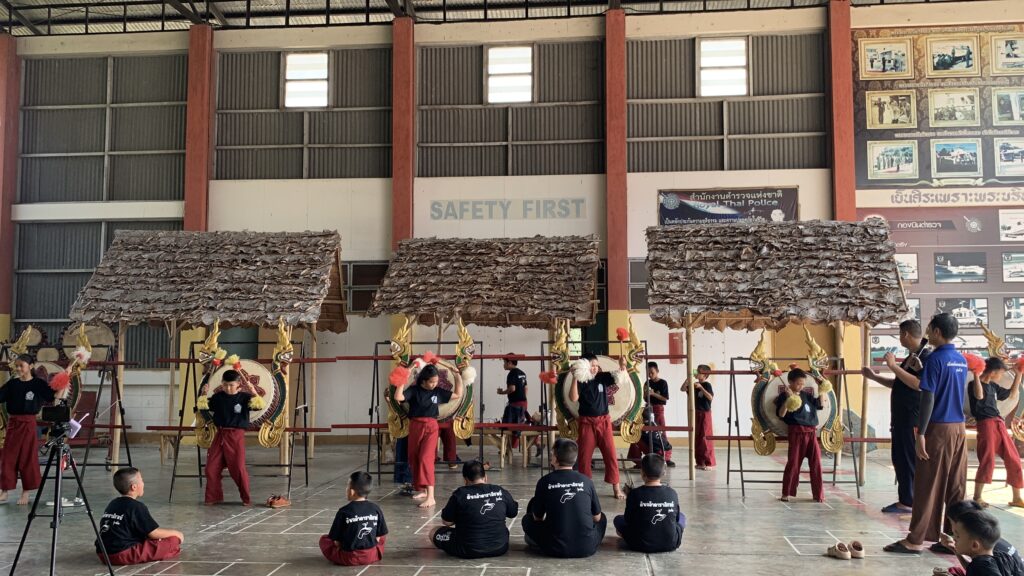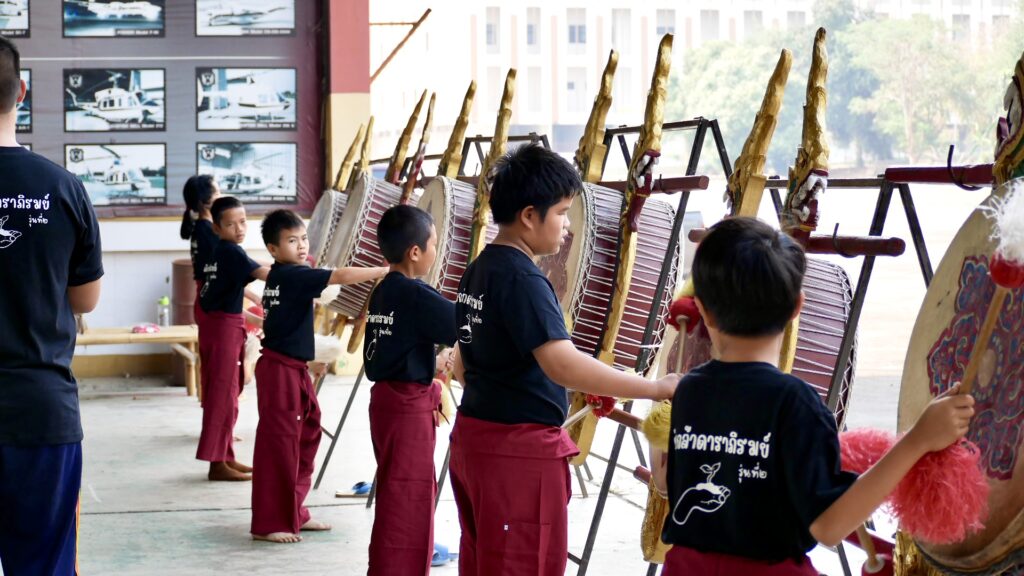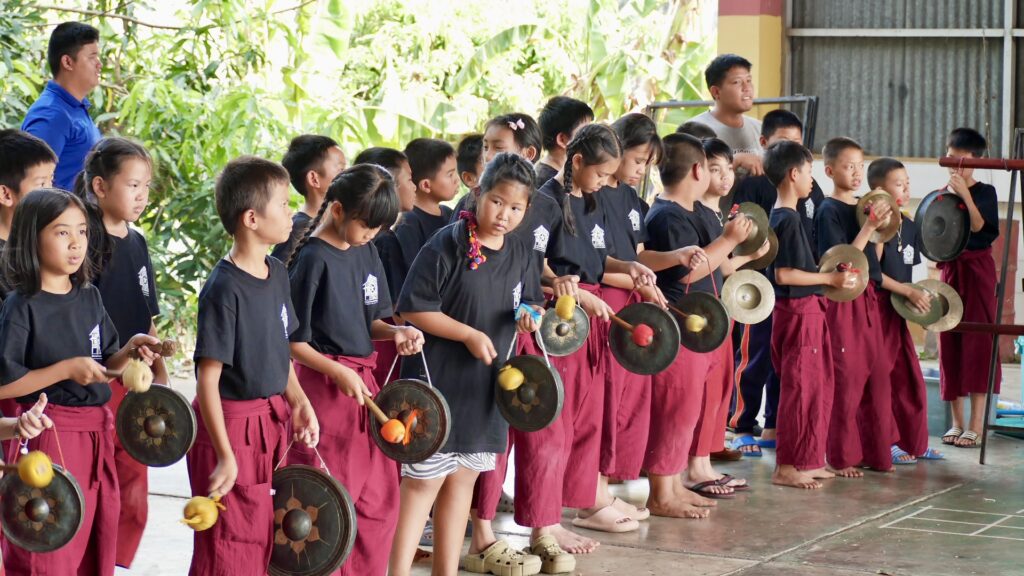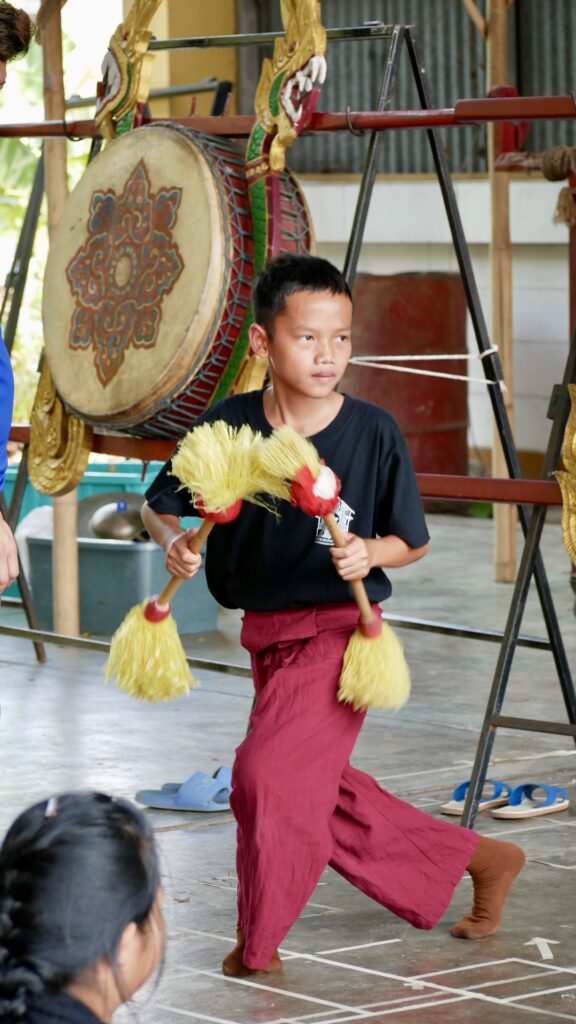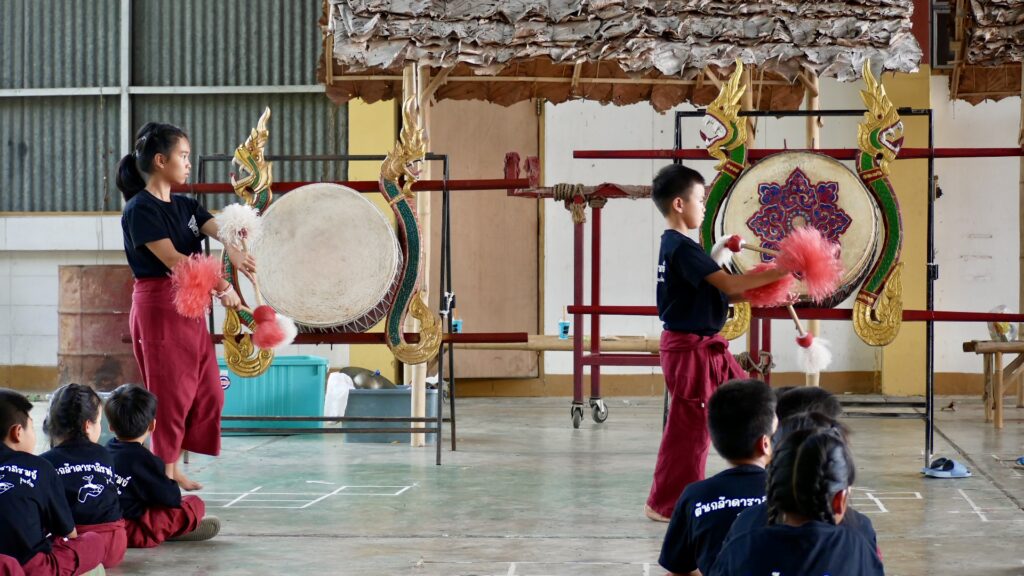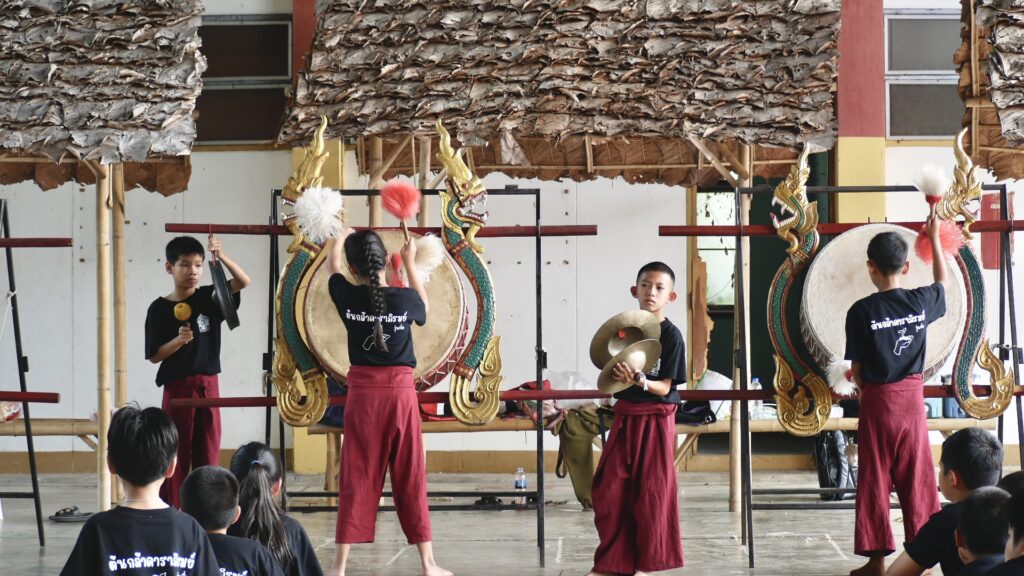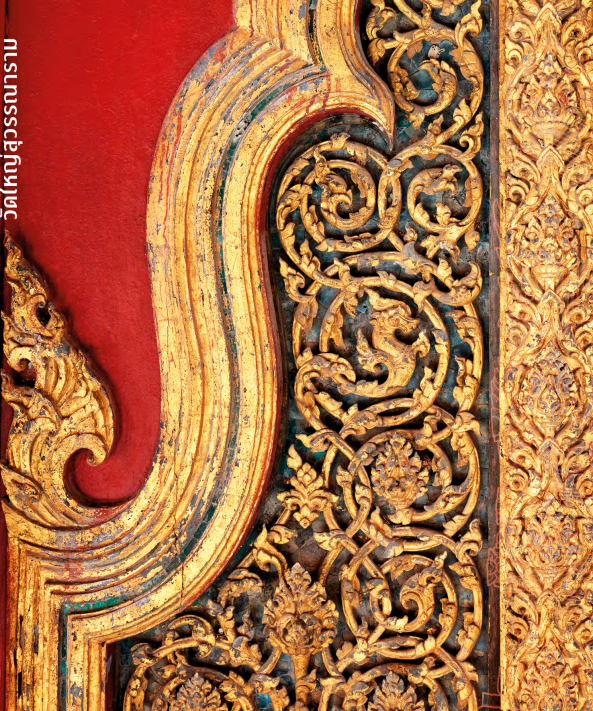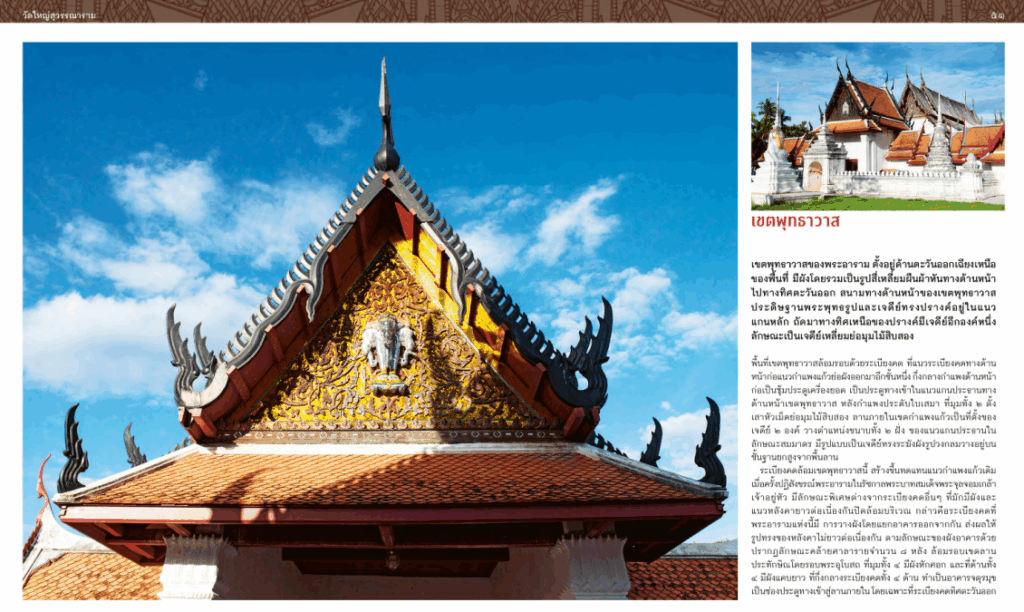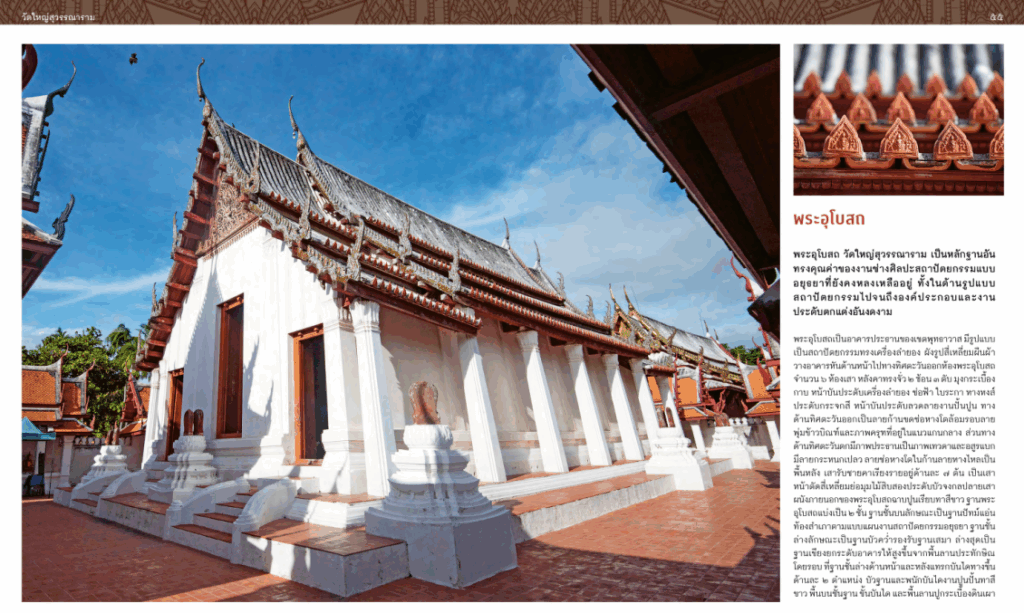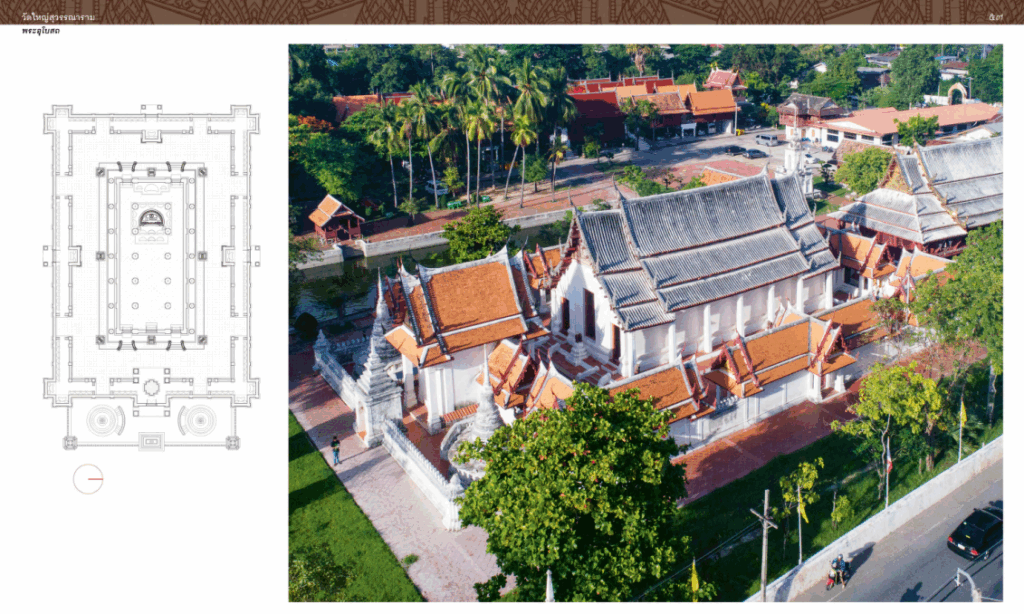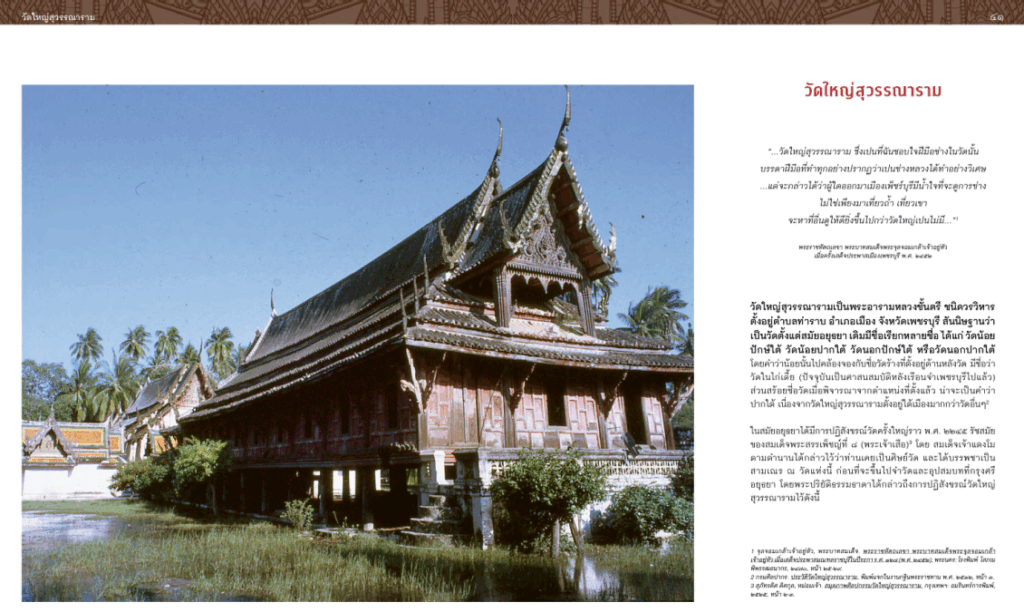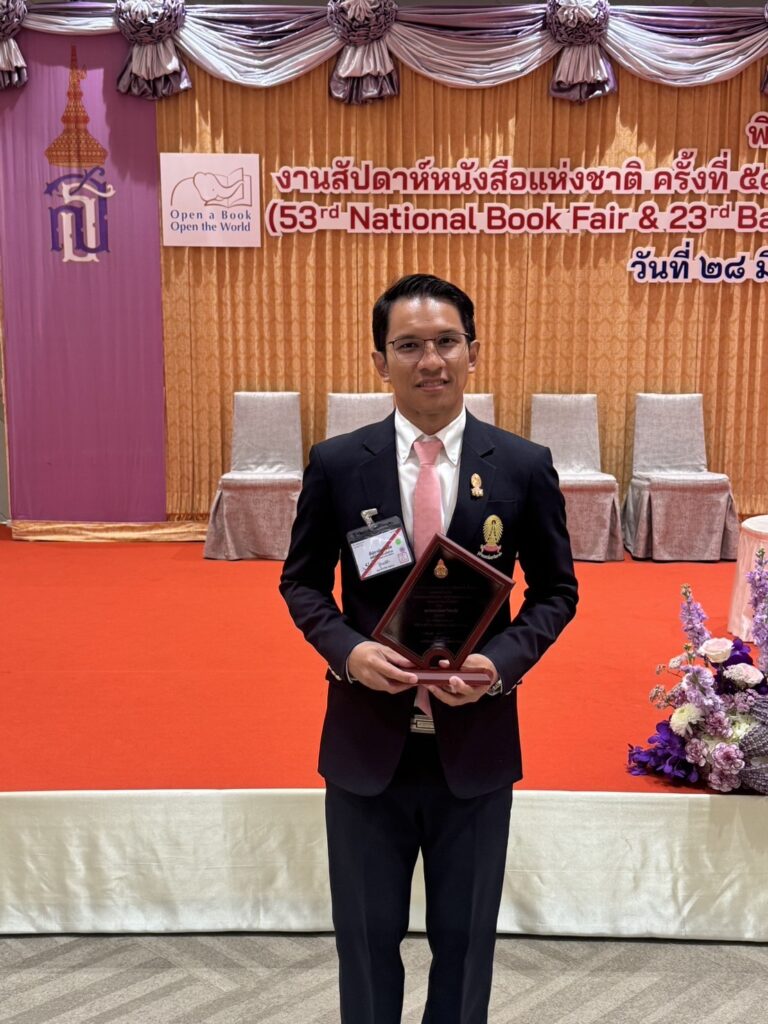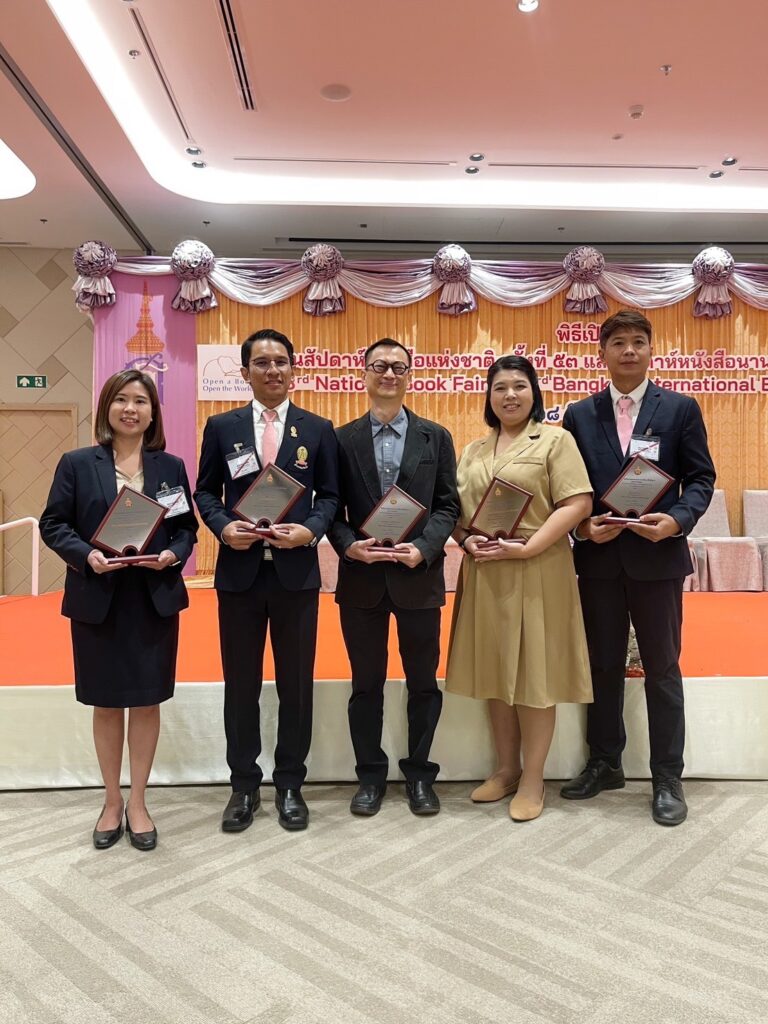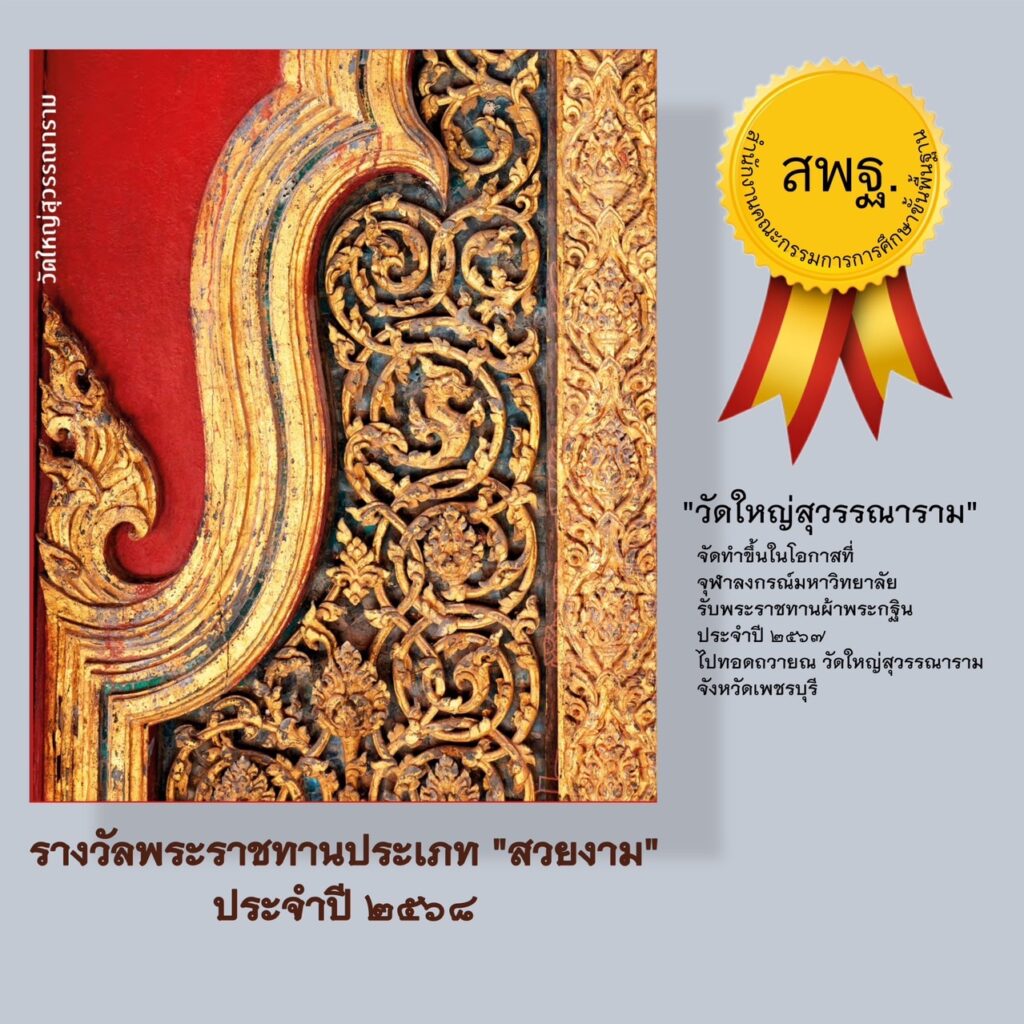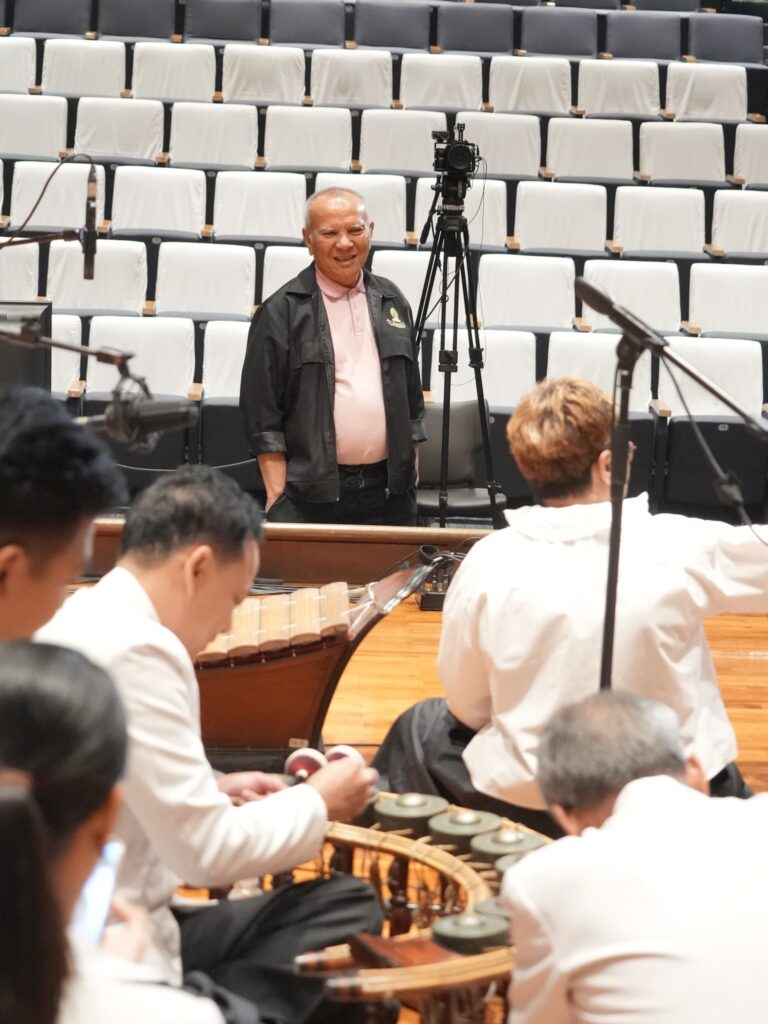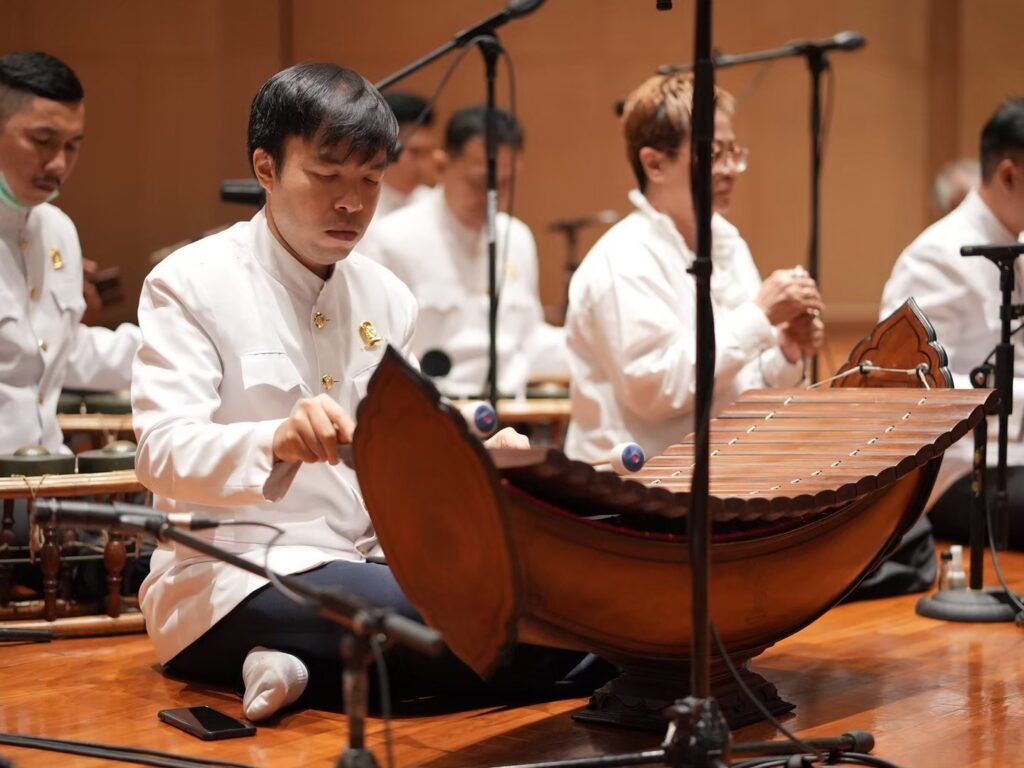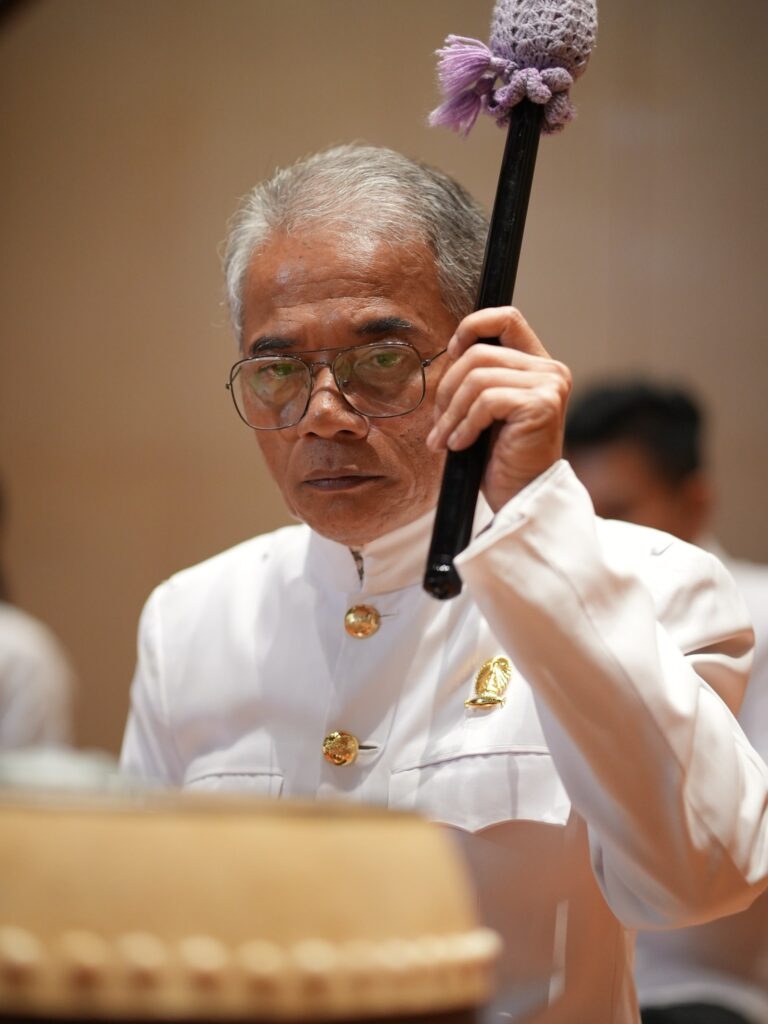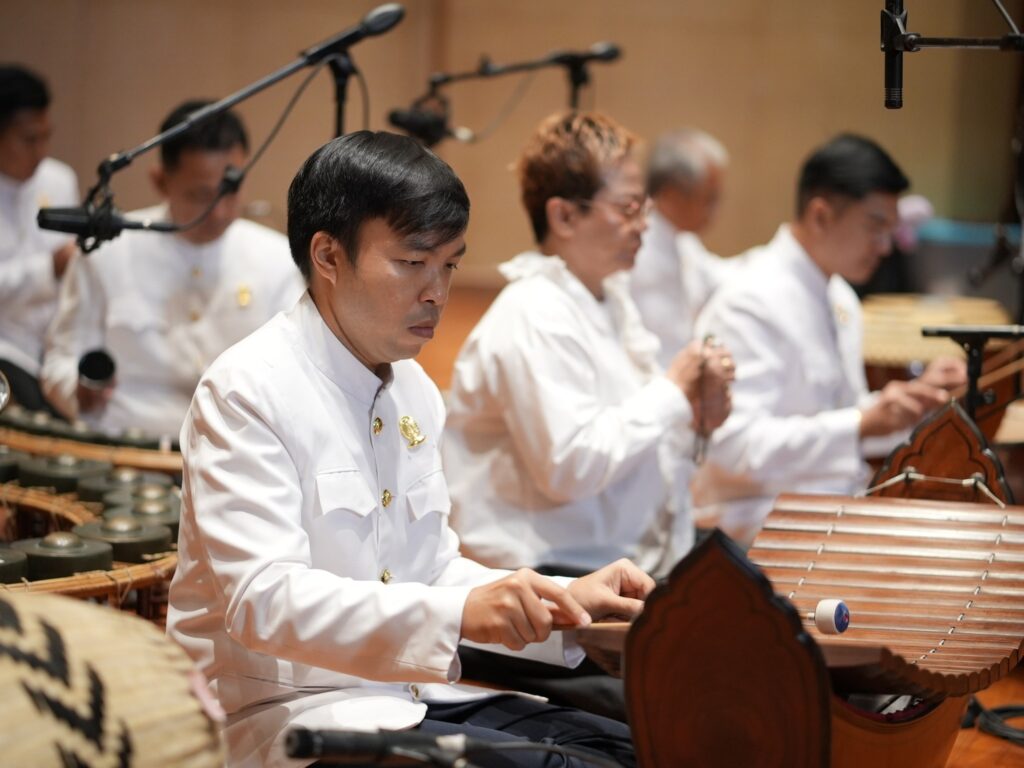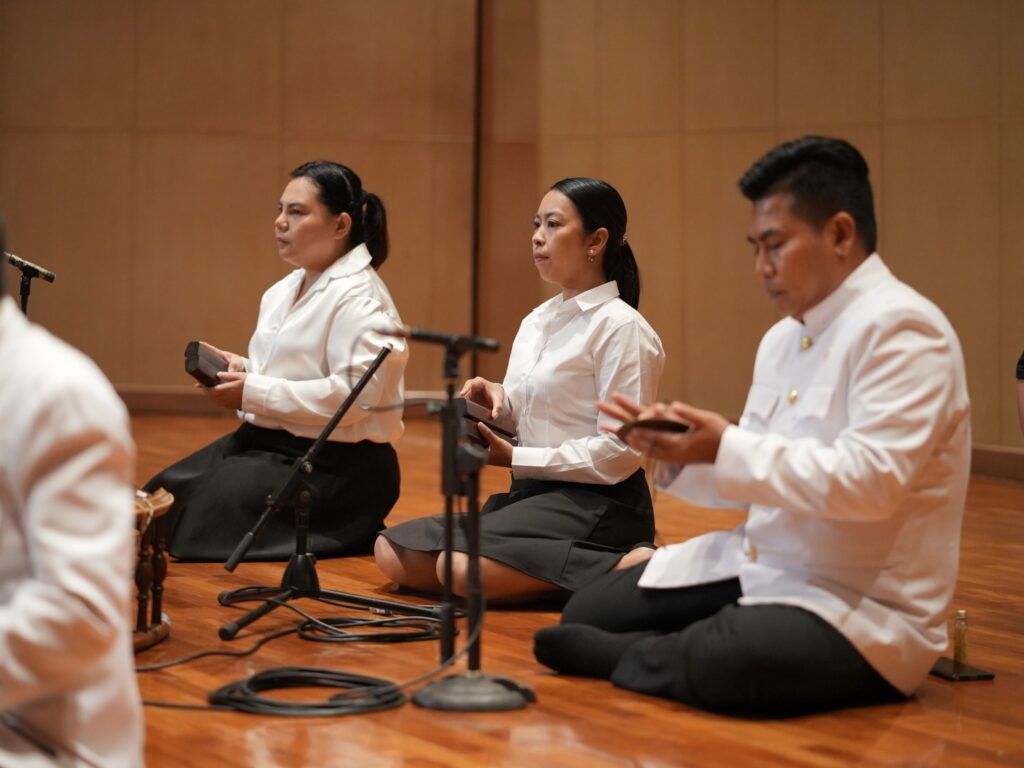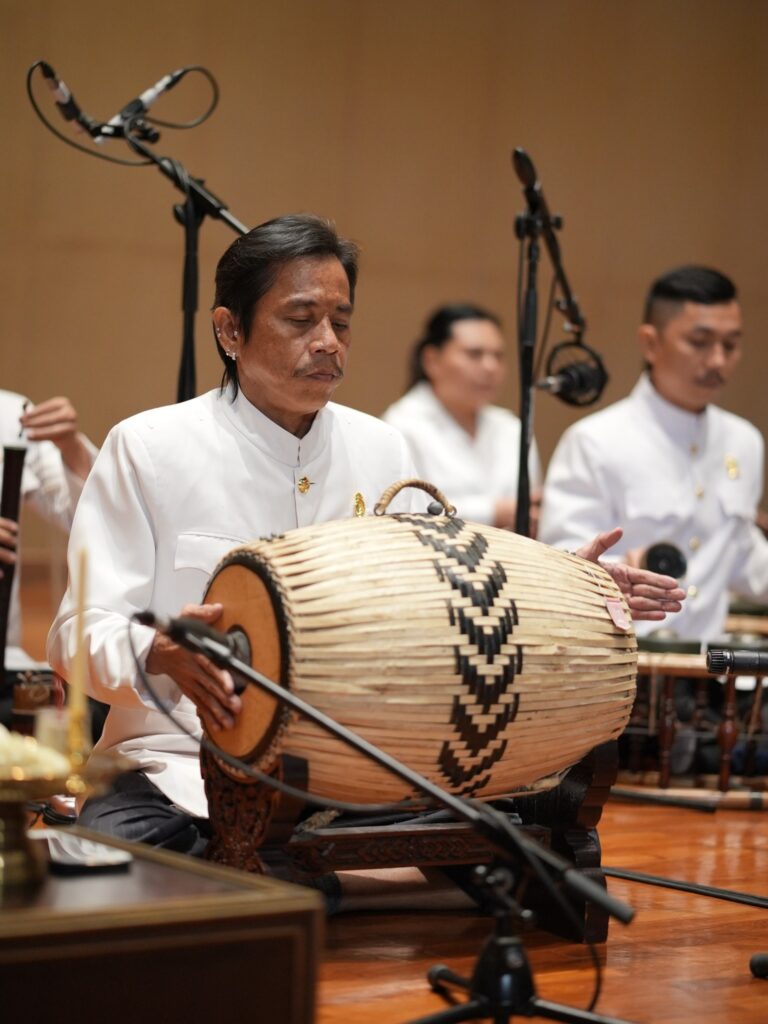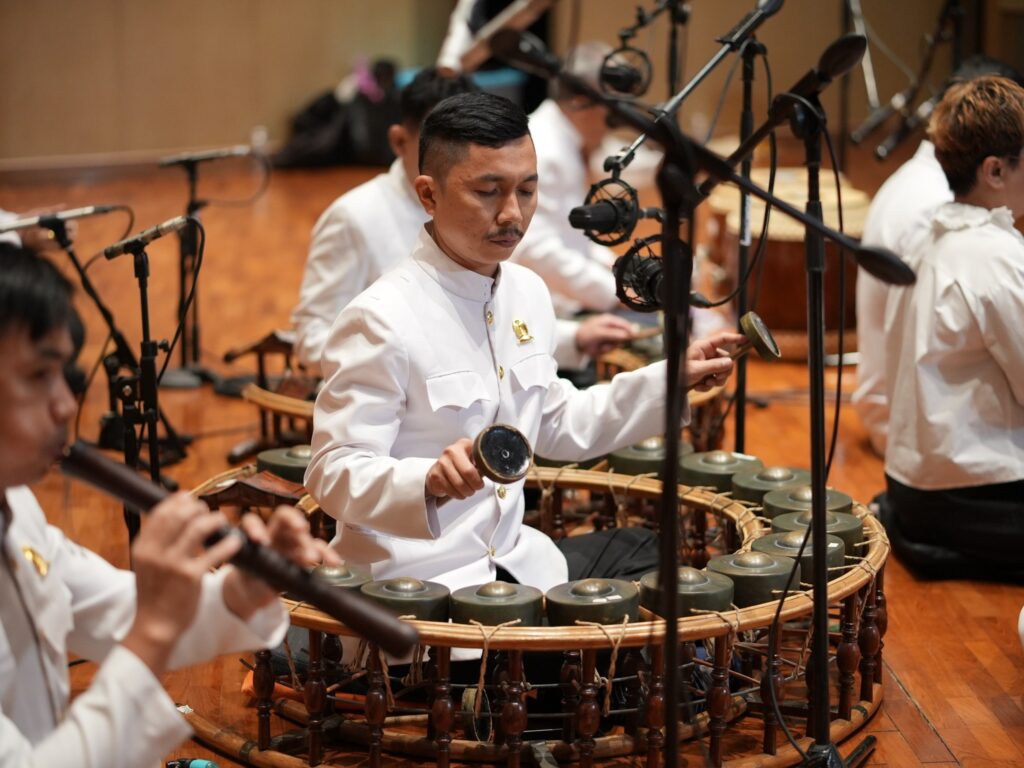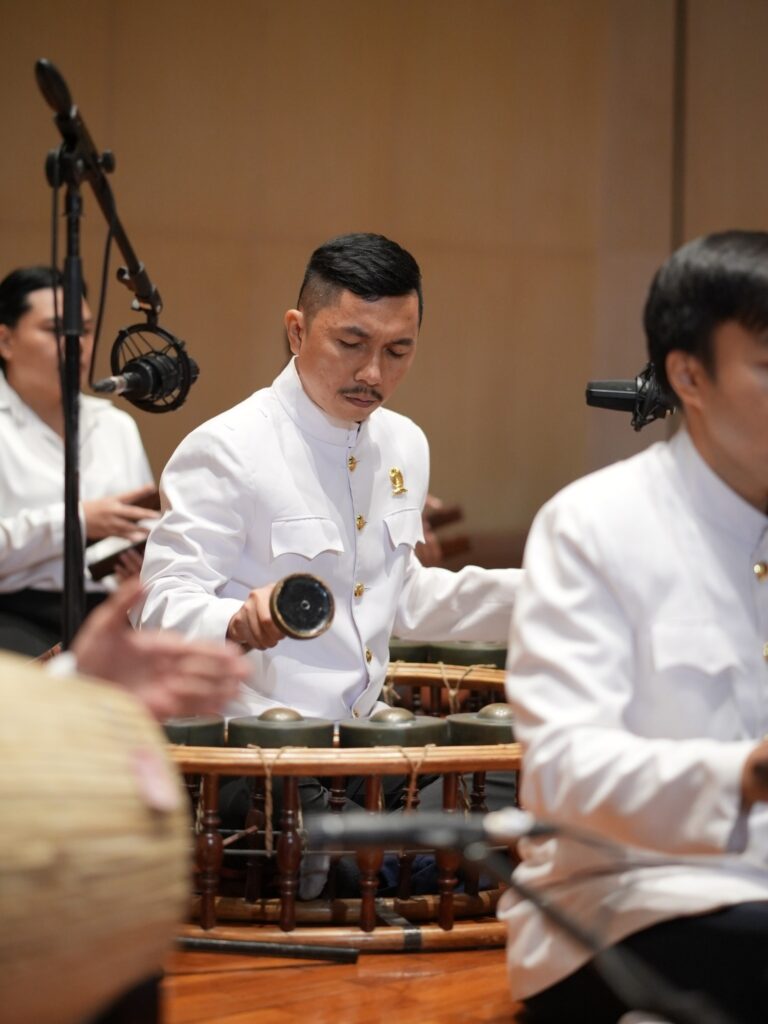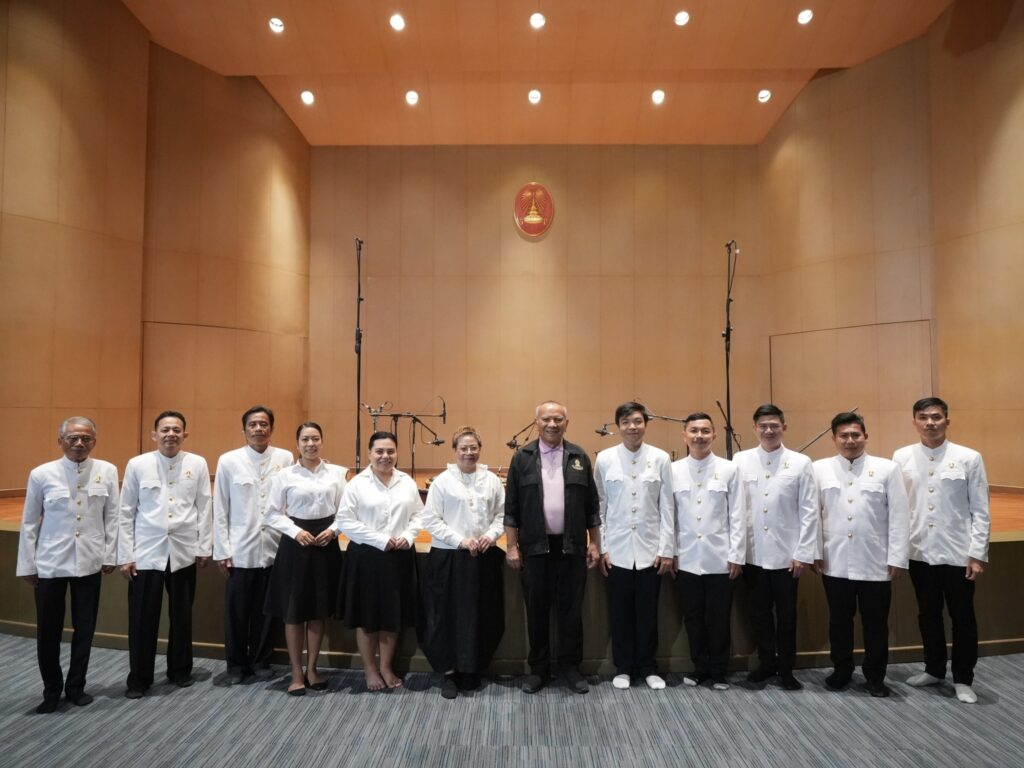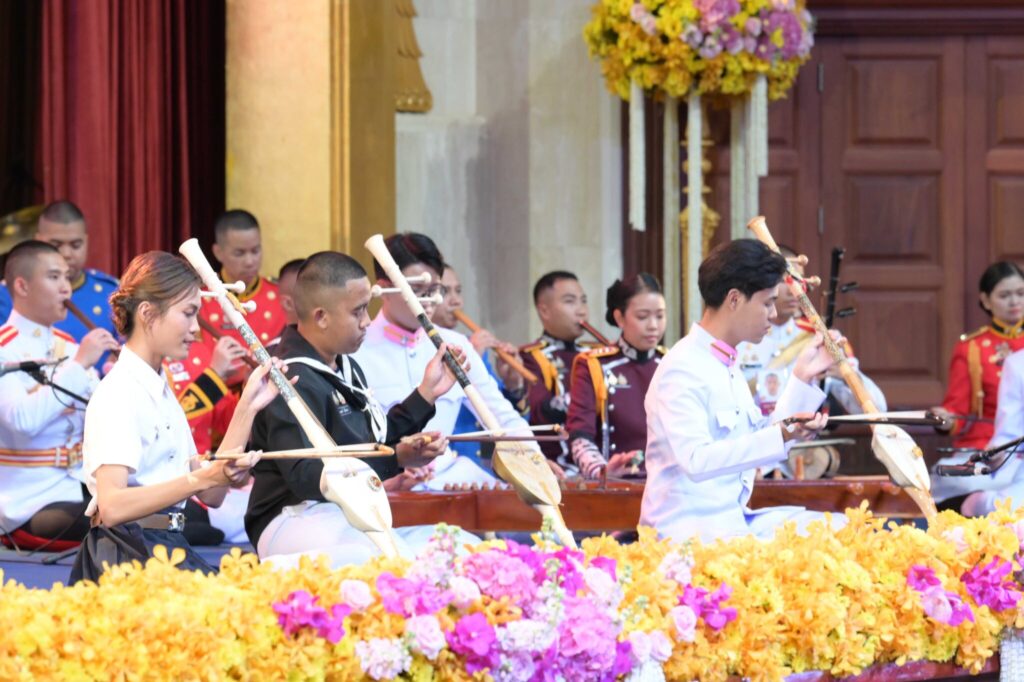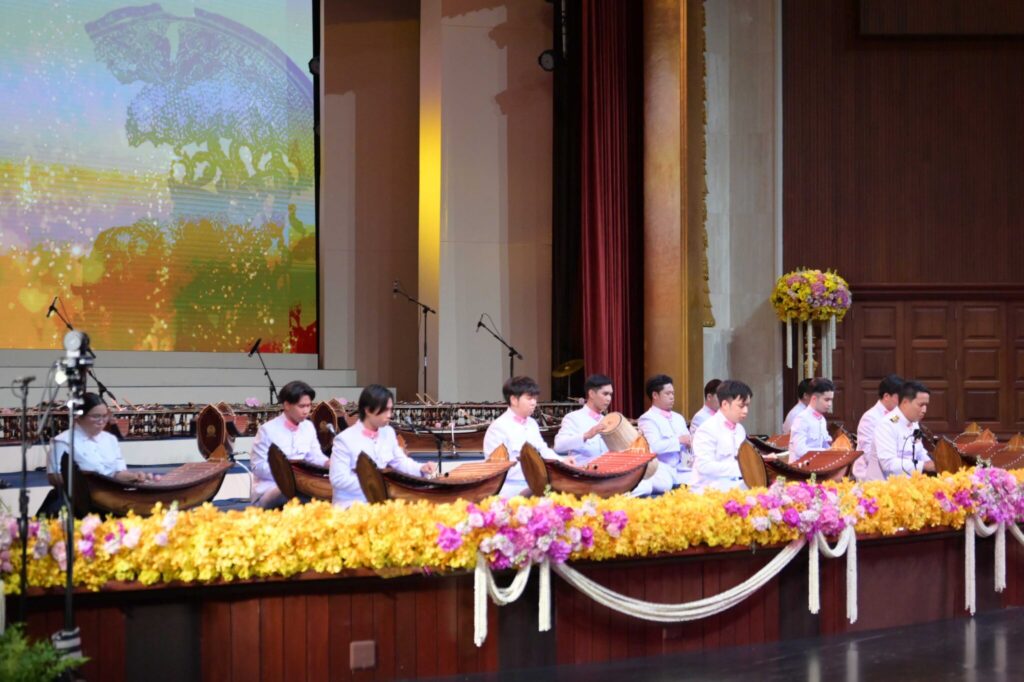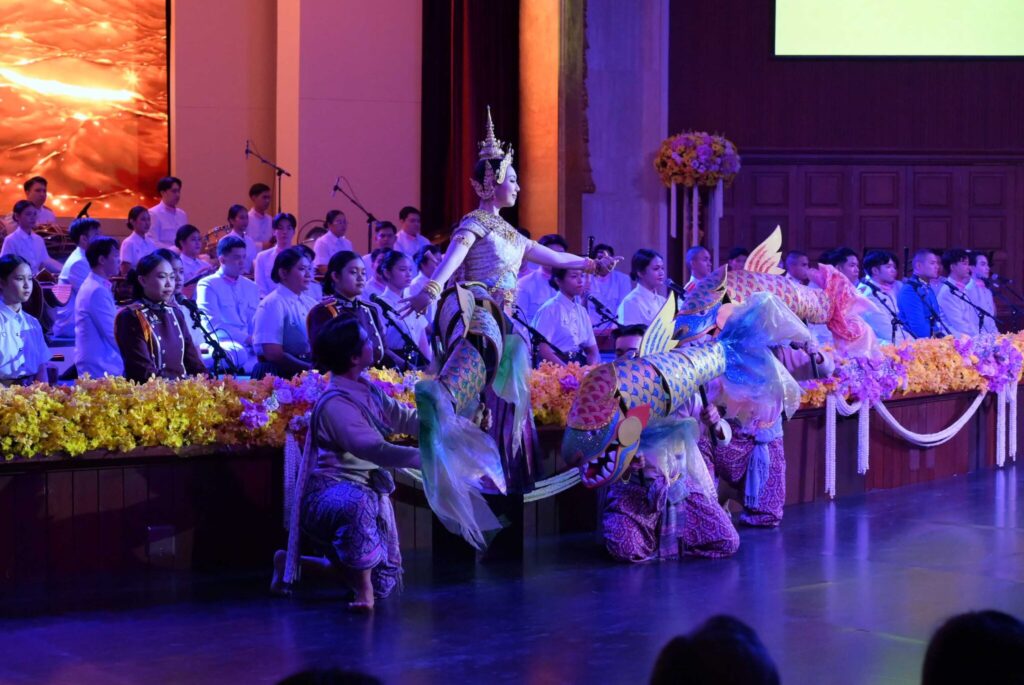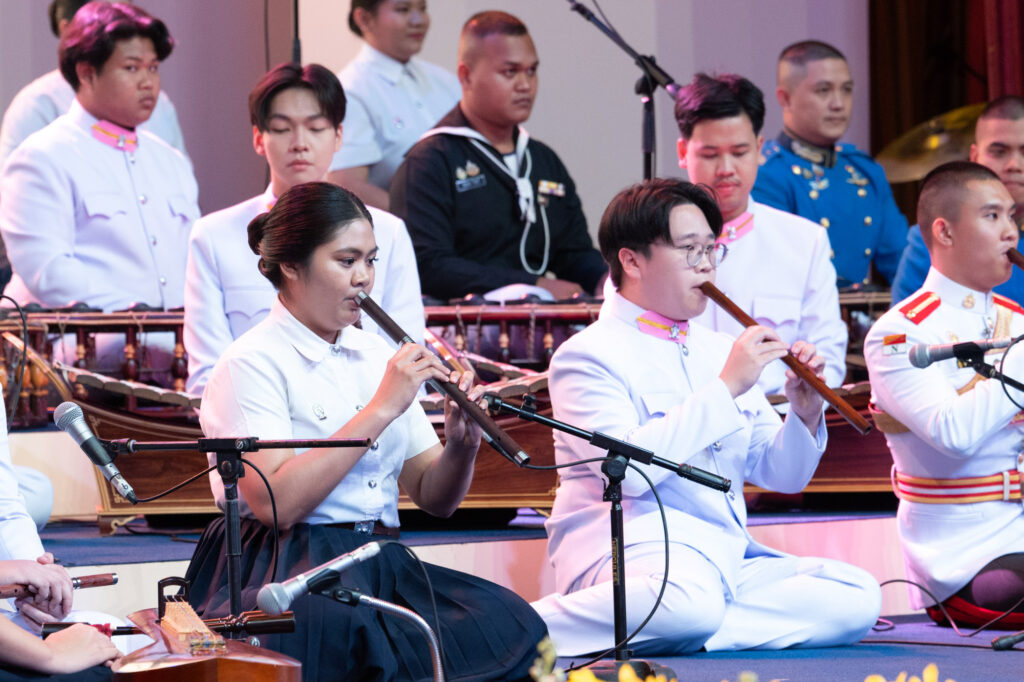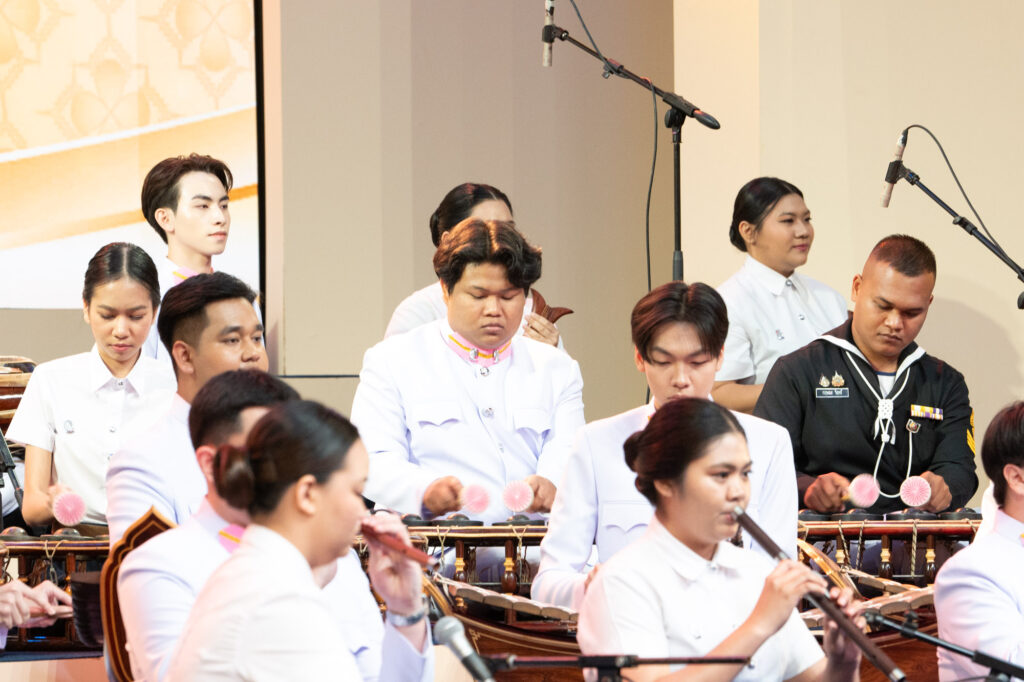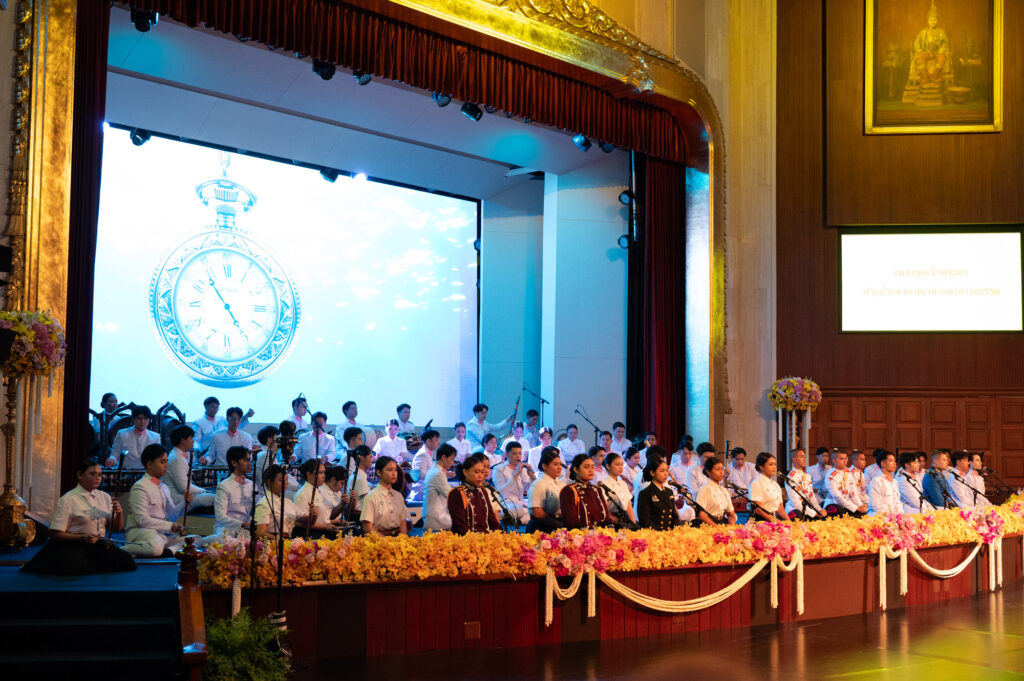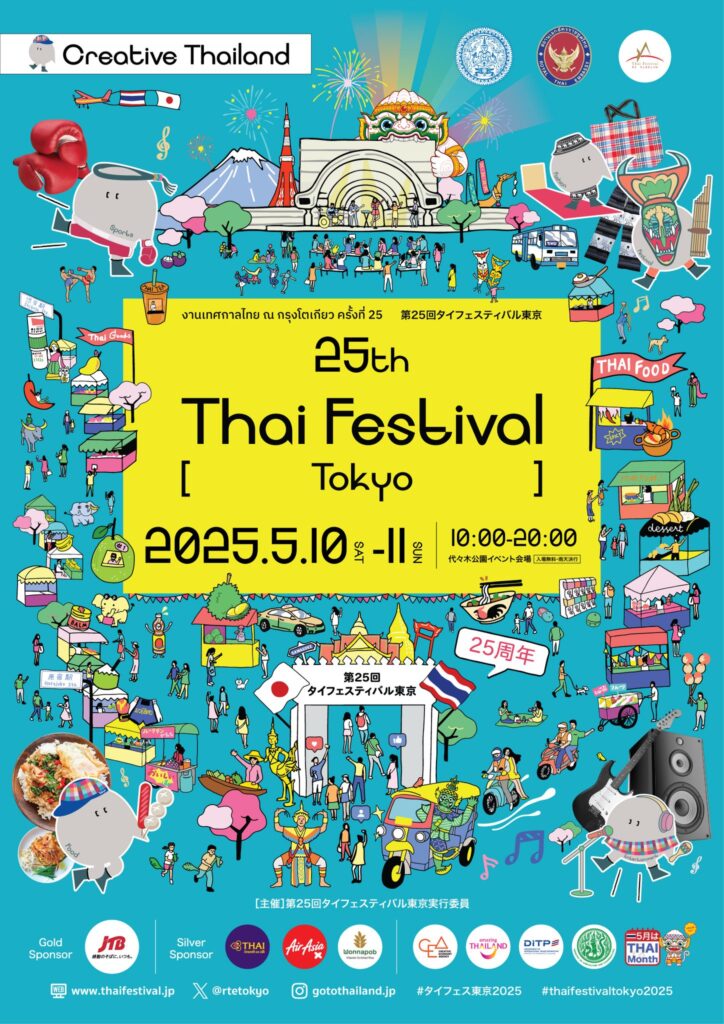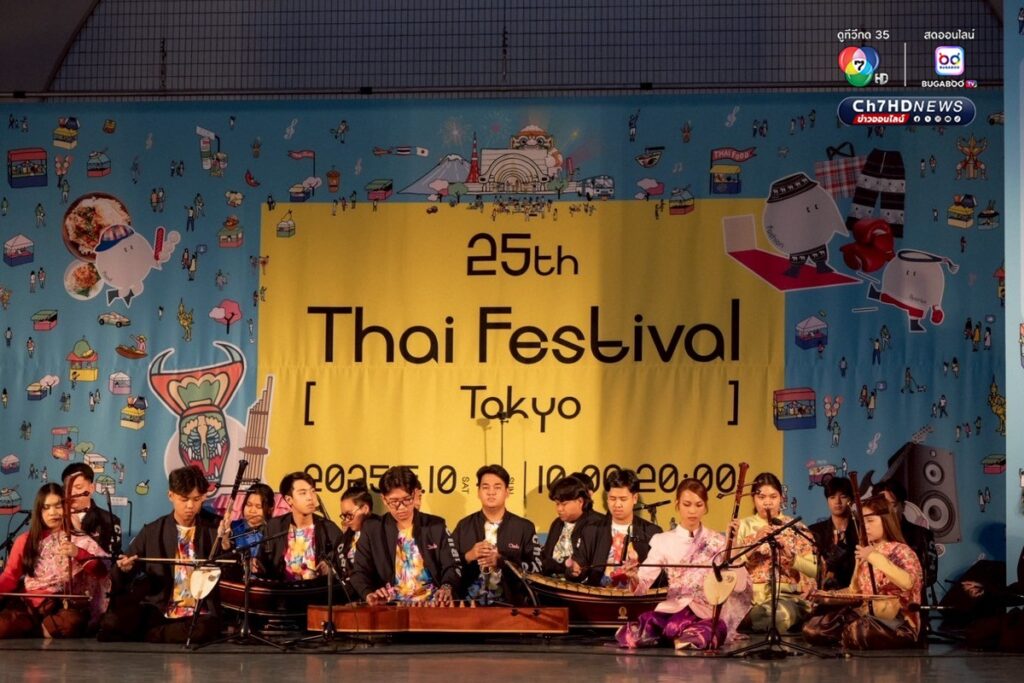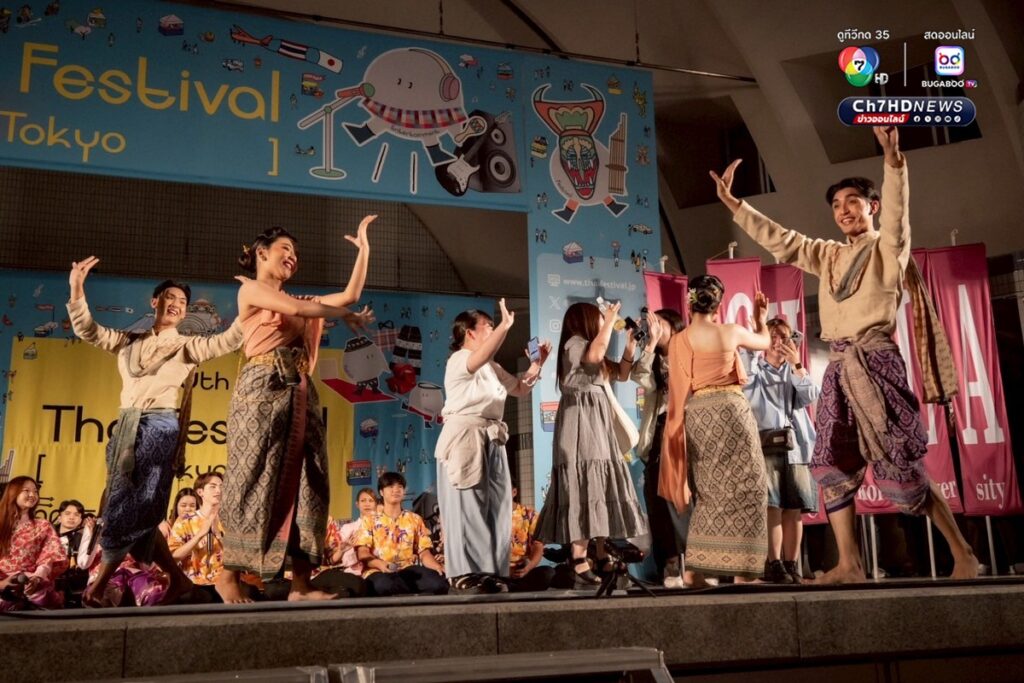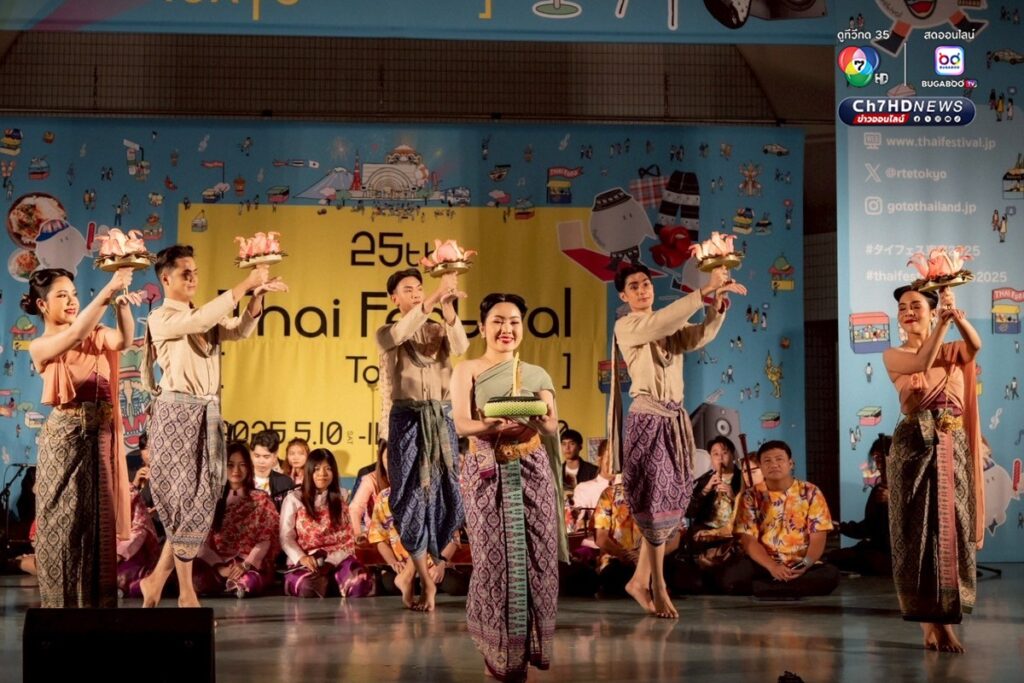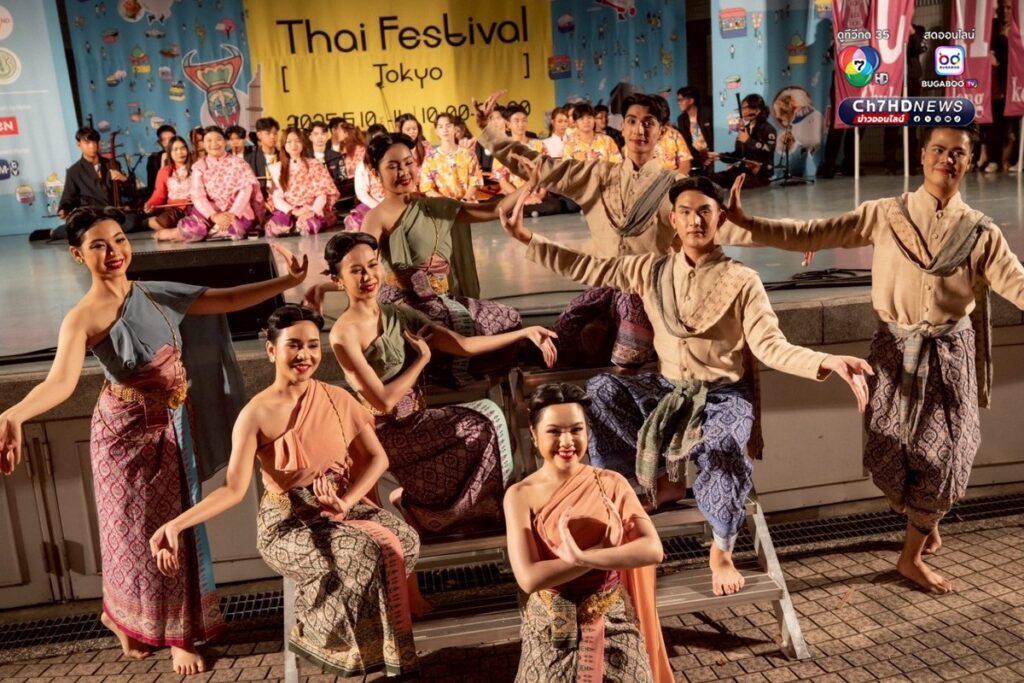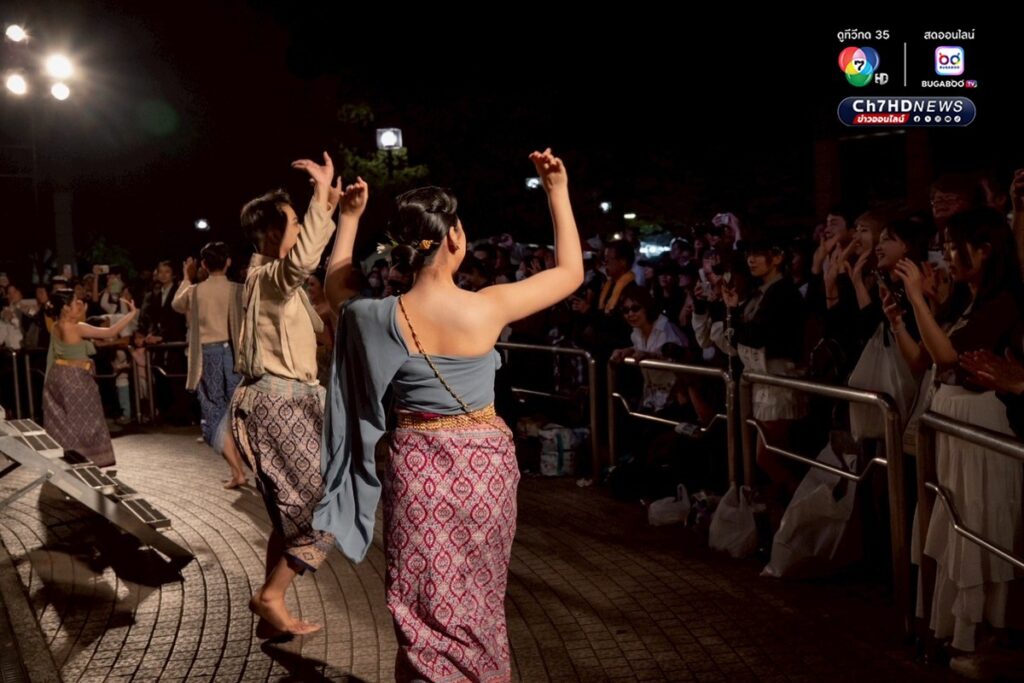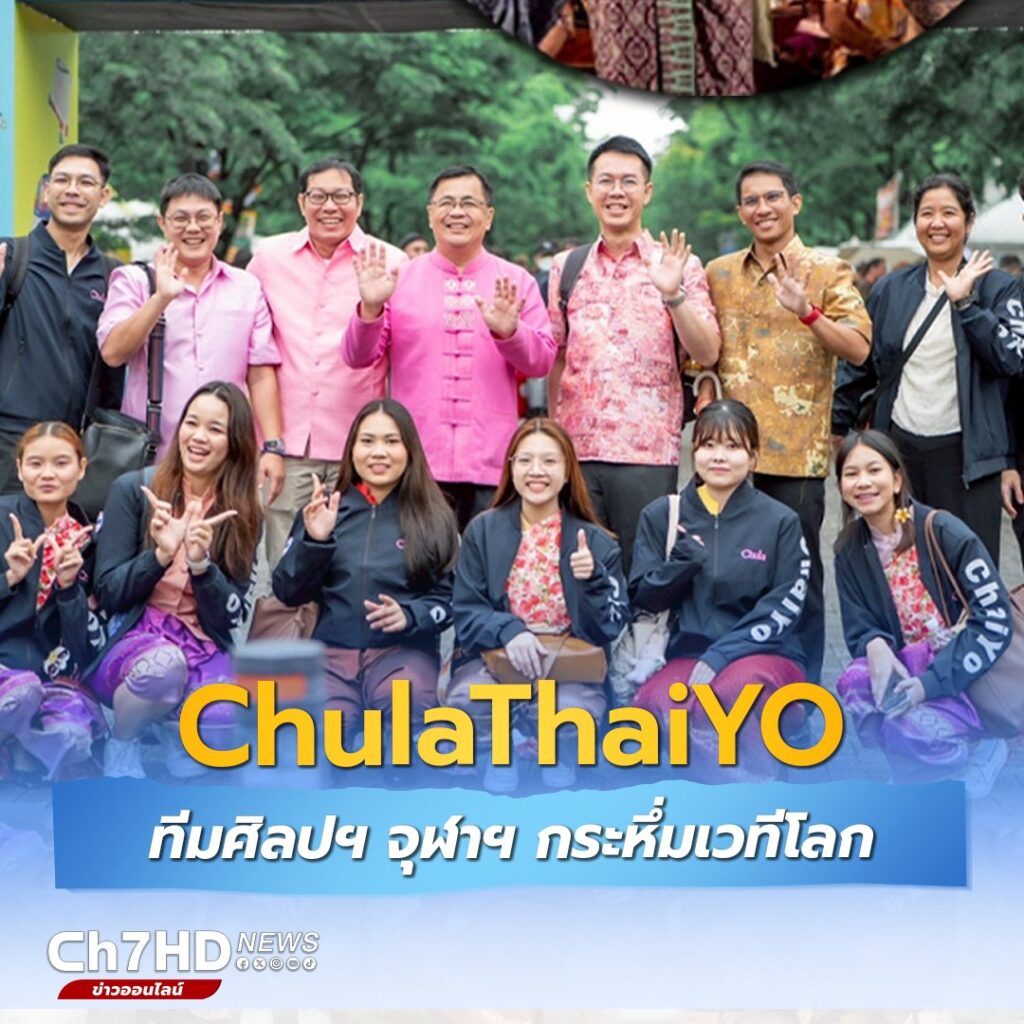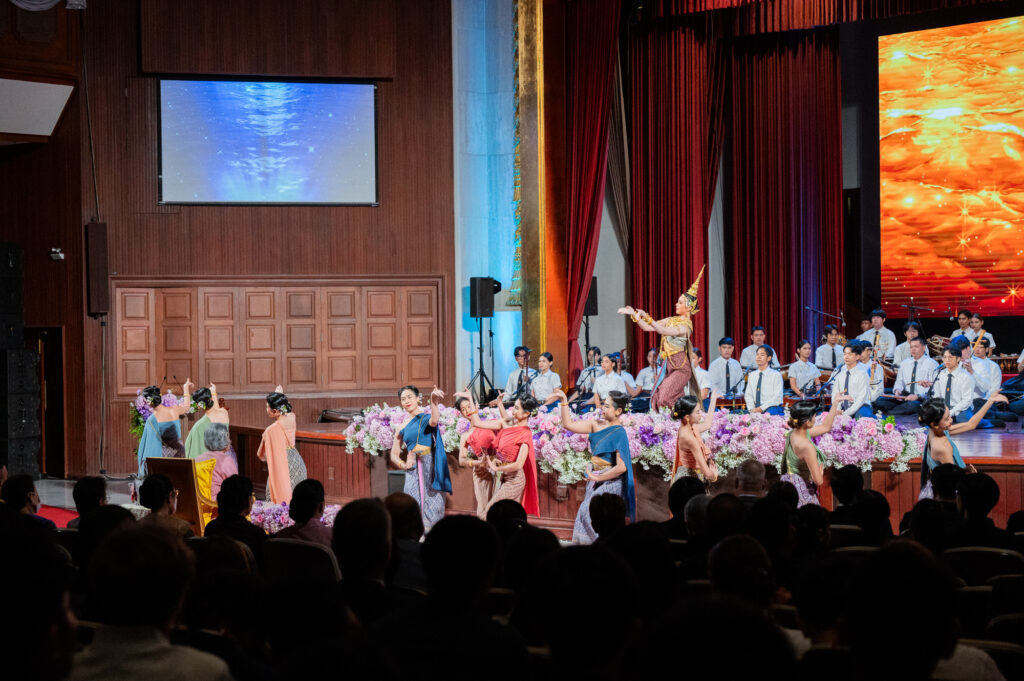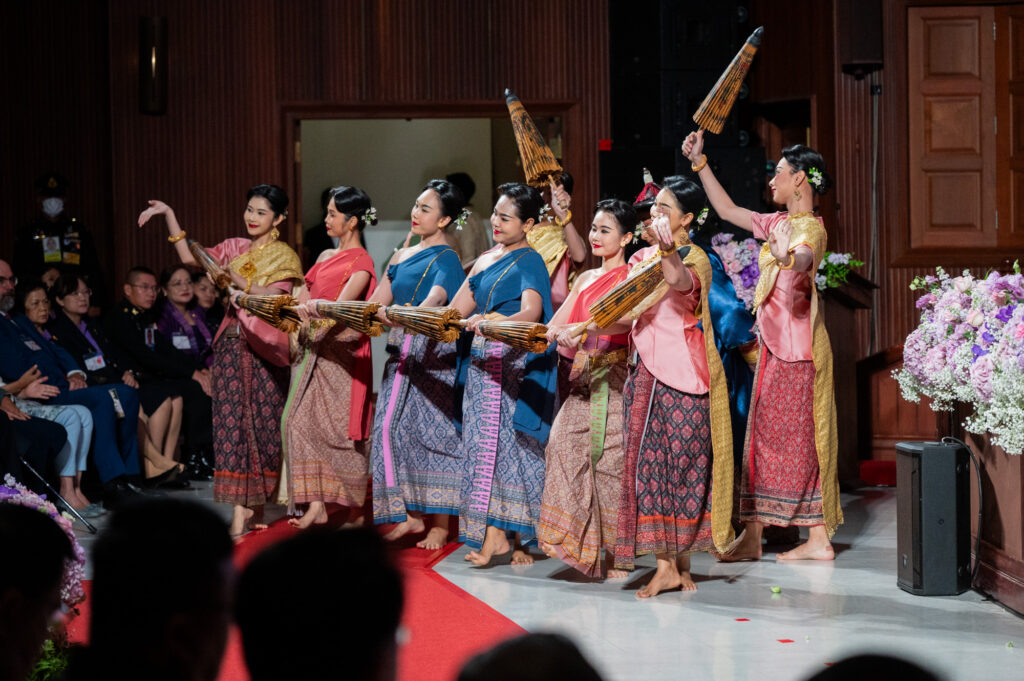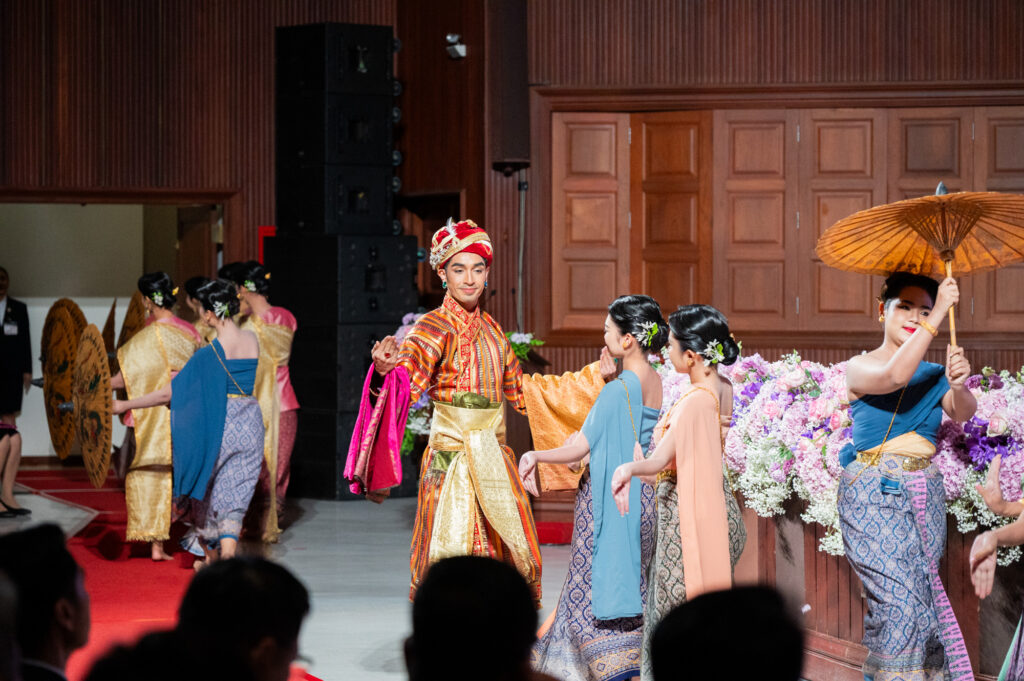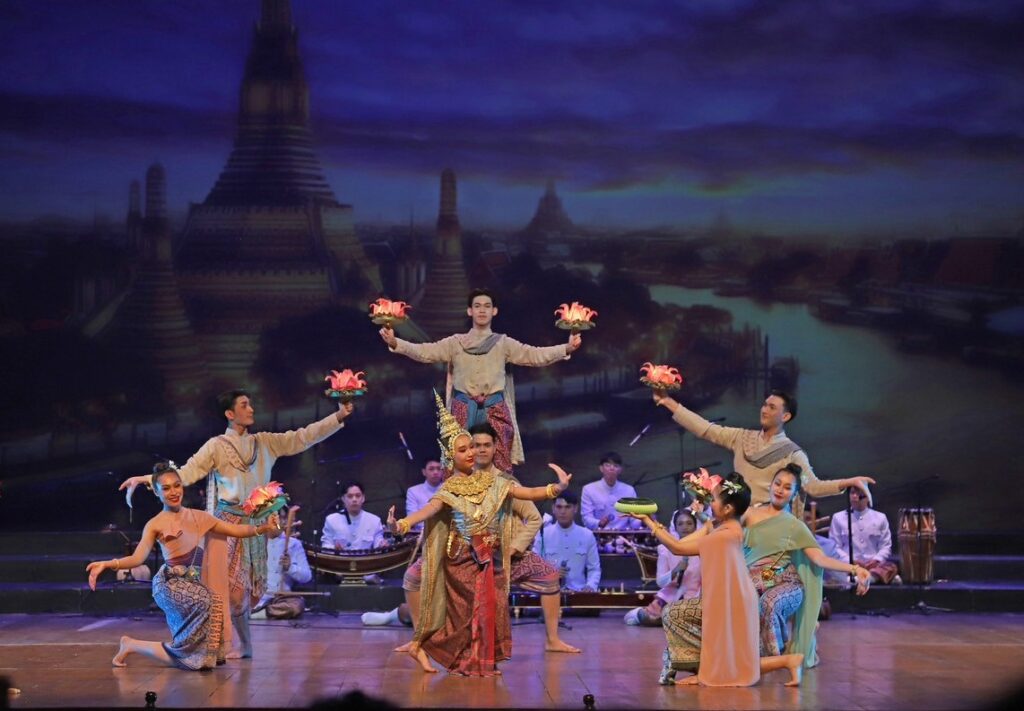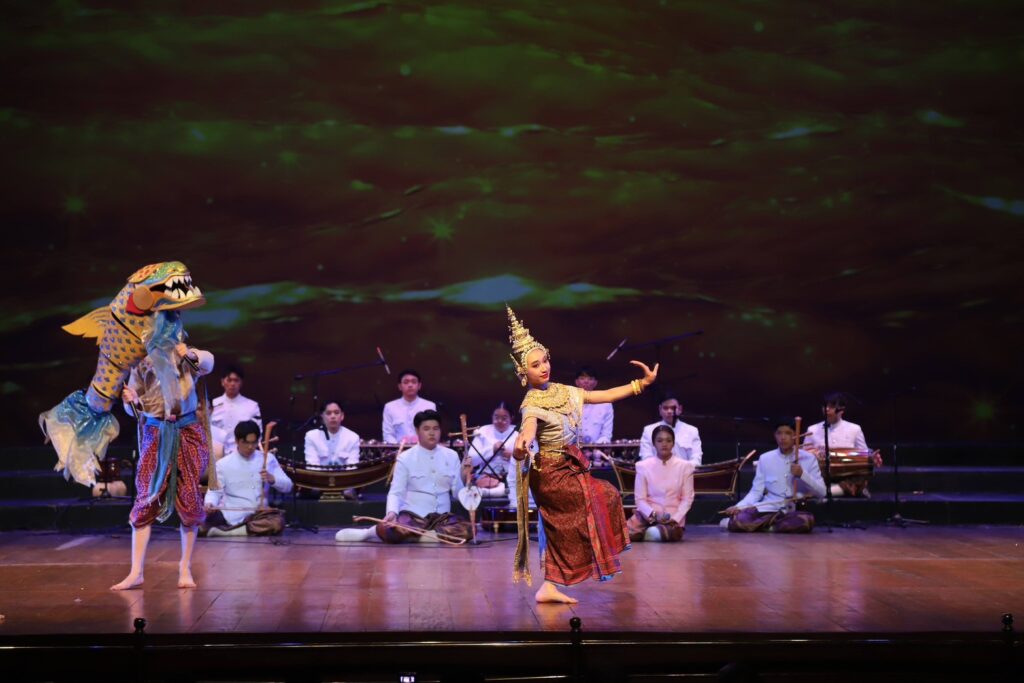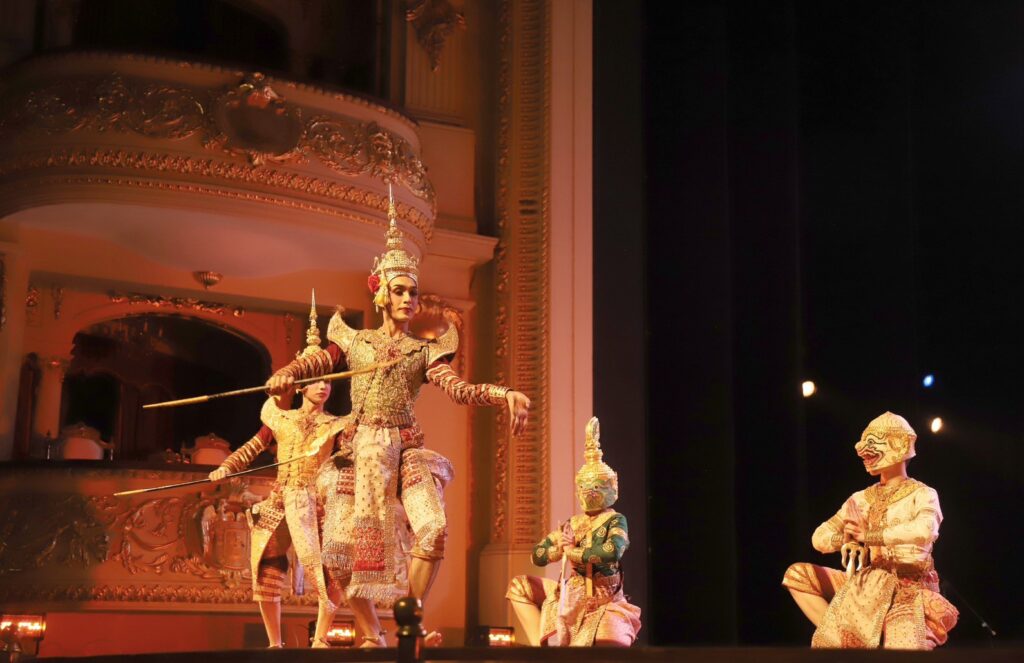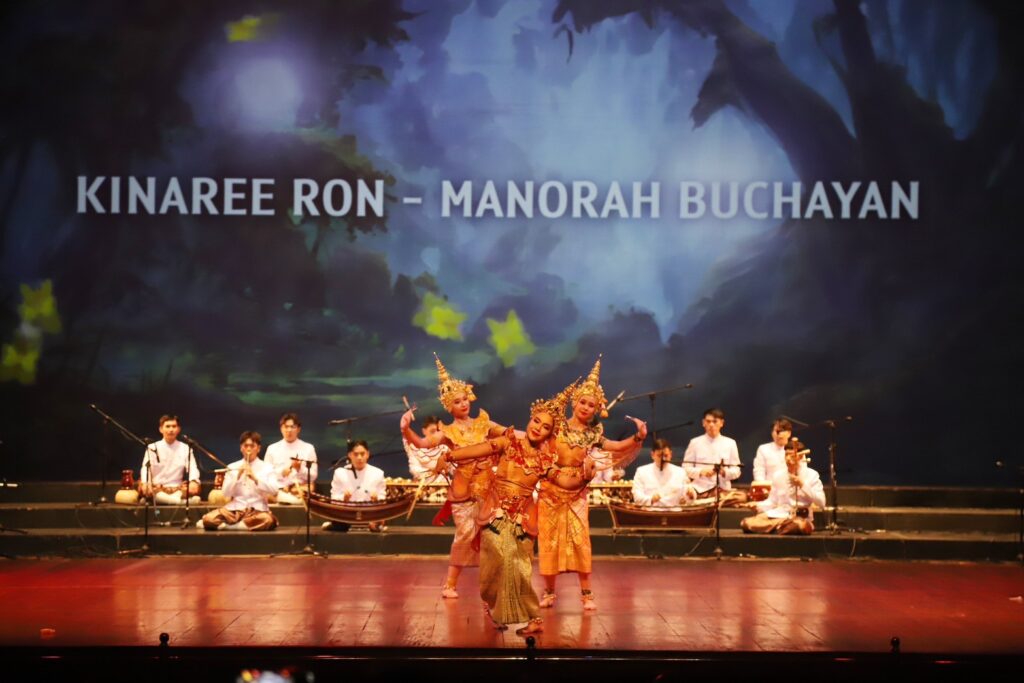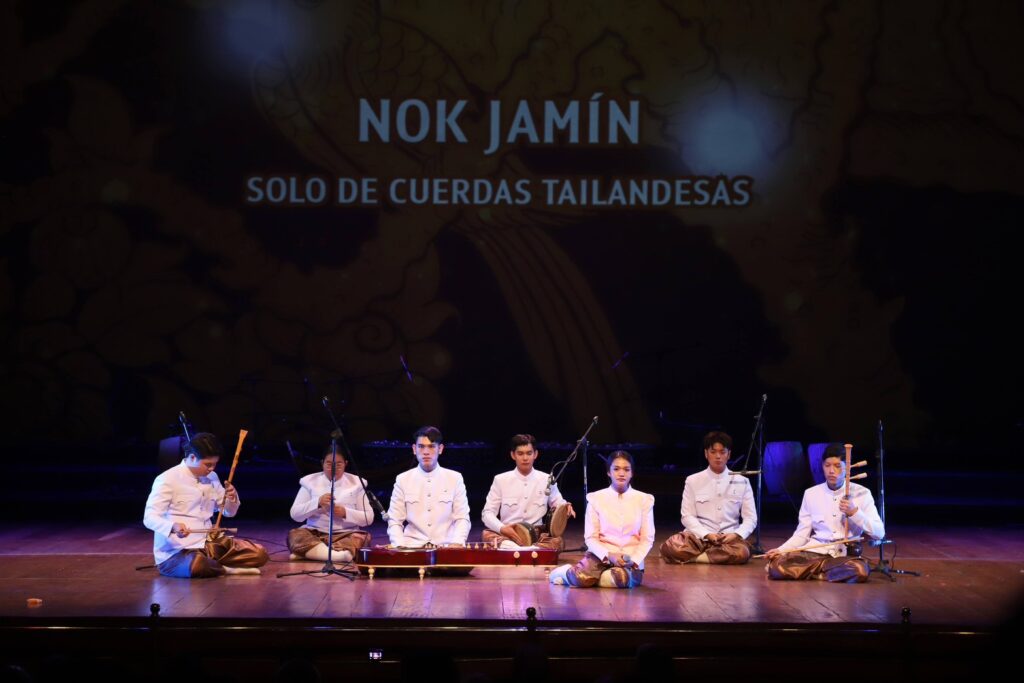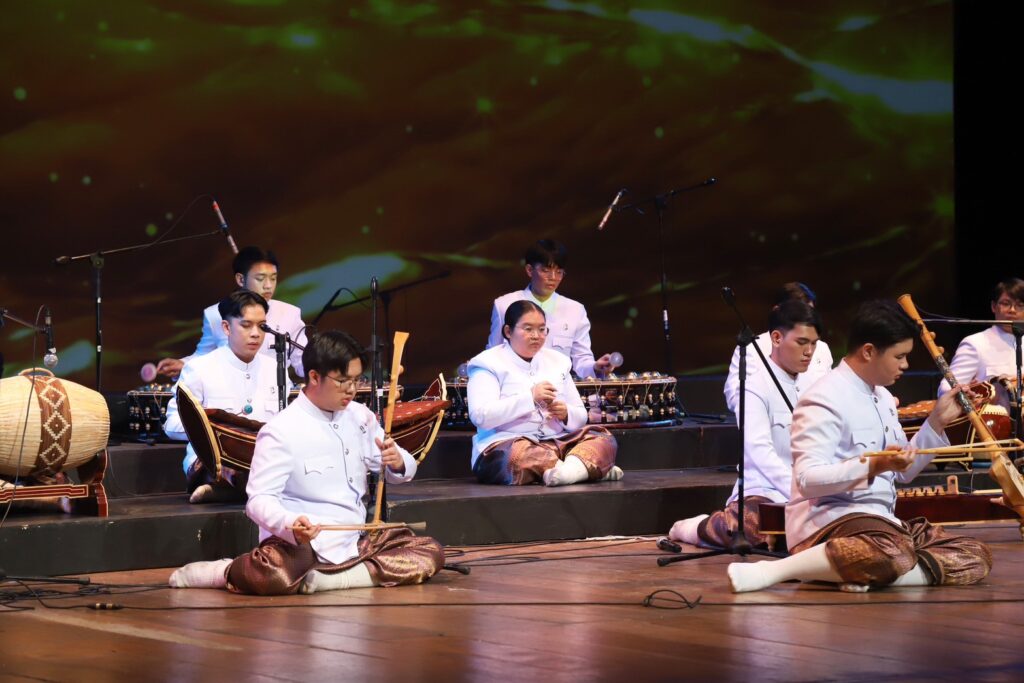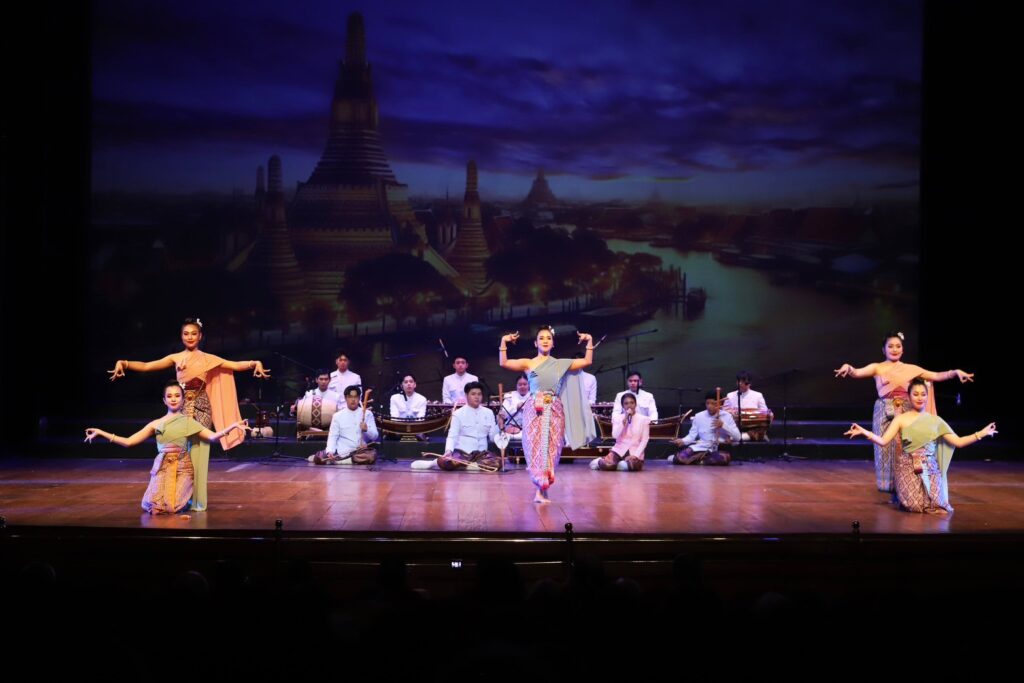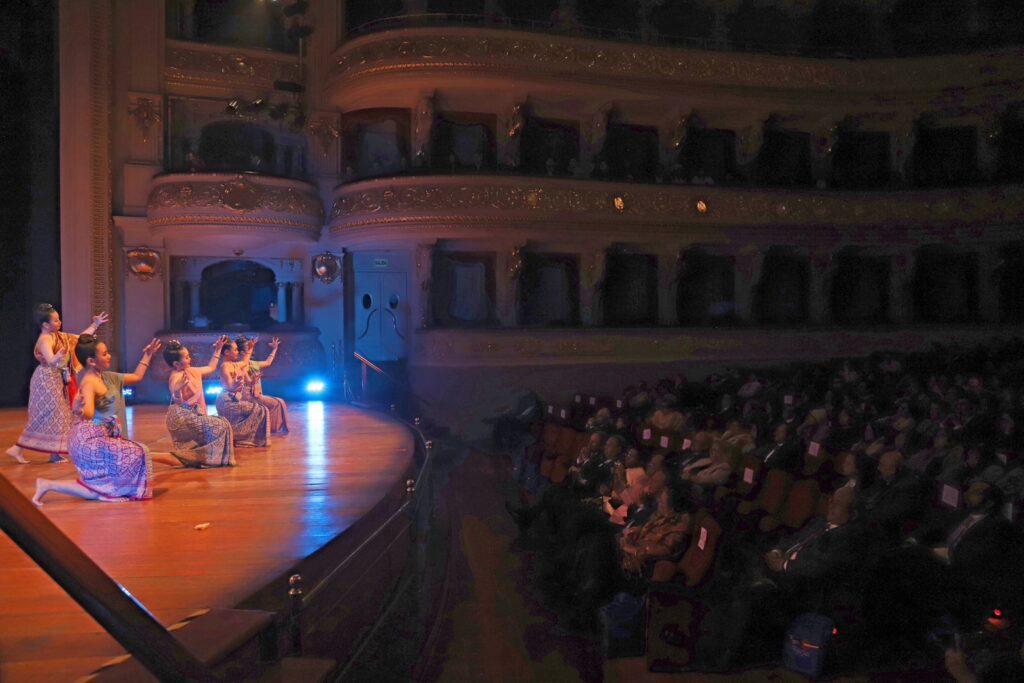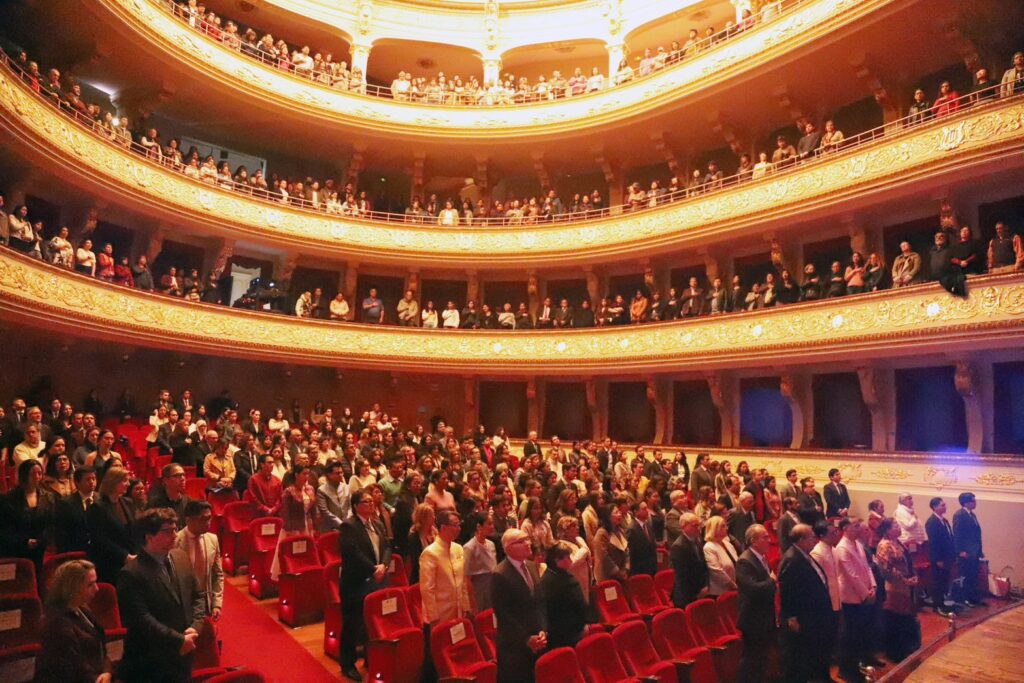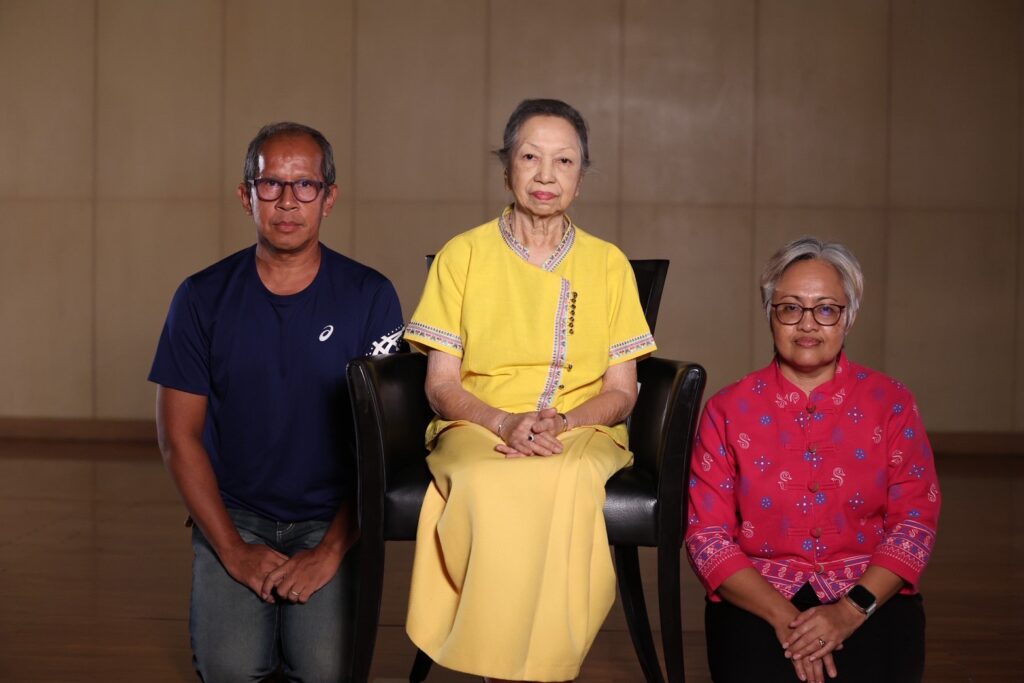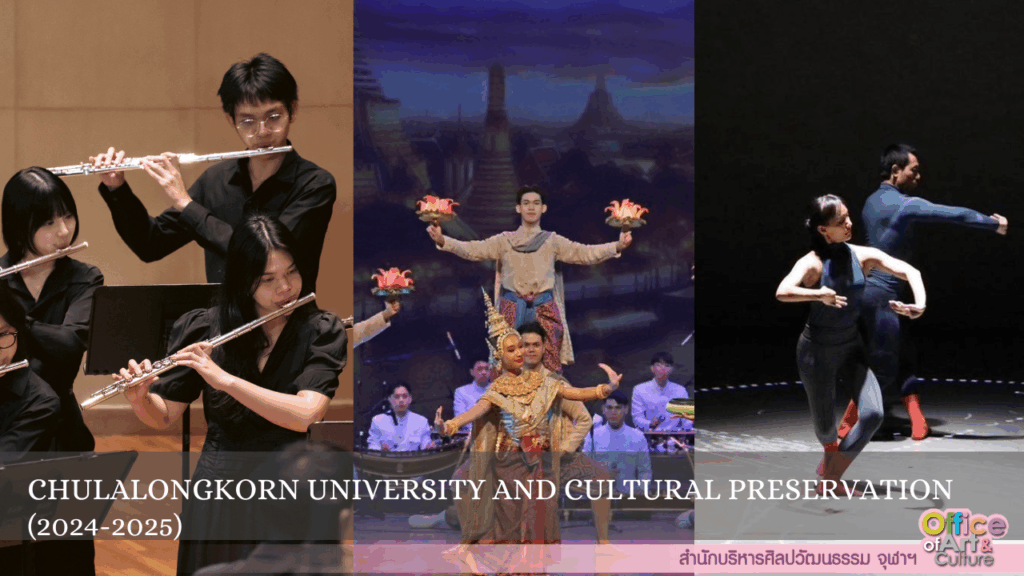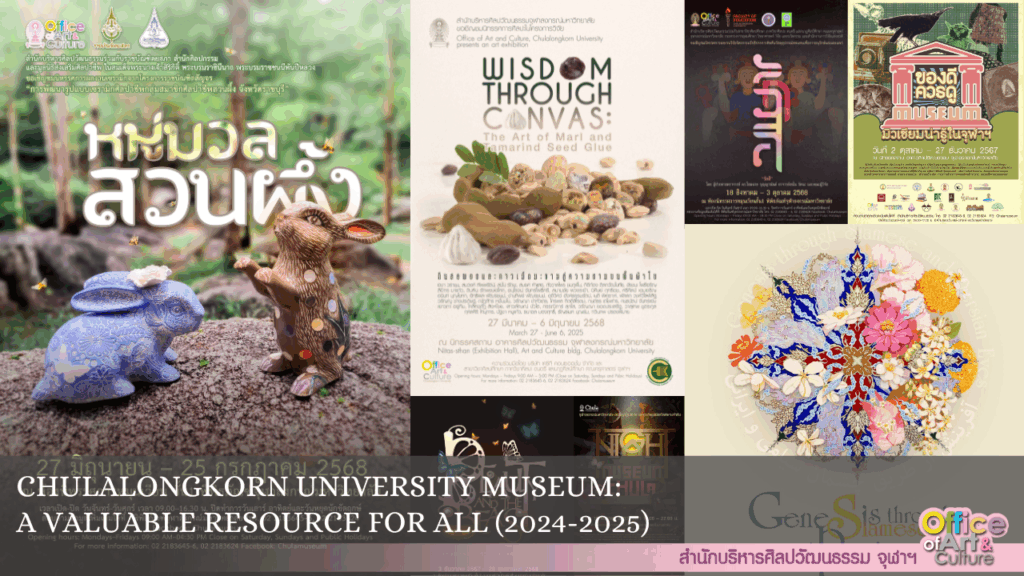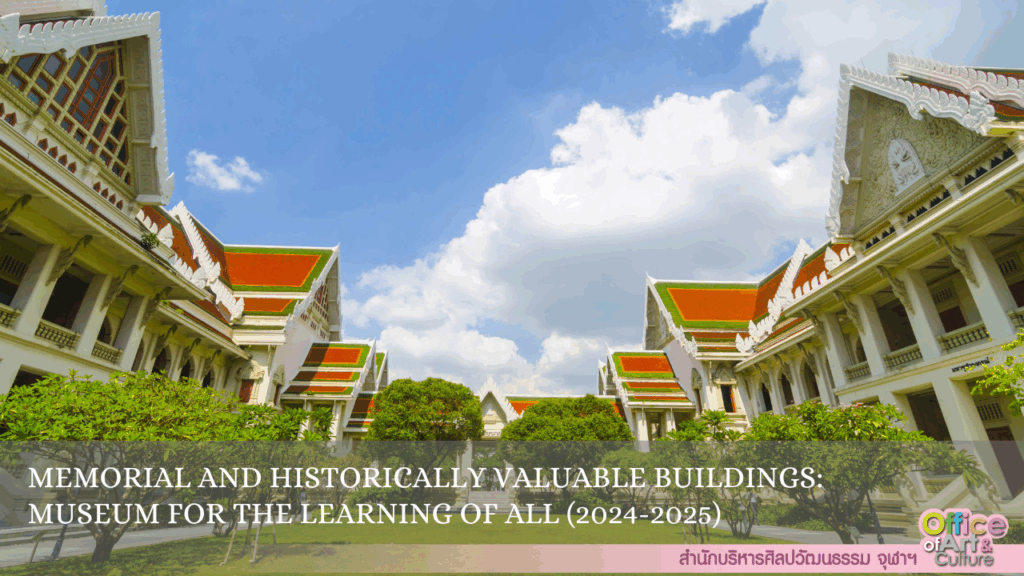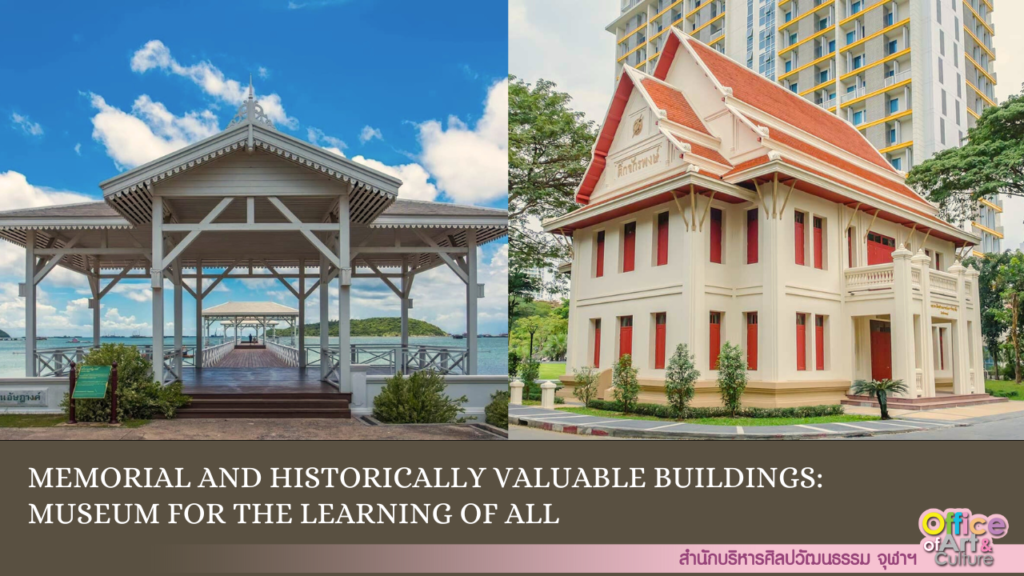Chulalongkorn University regularly carries on new initiatives and ongoing projects to record and preserve cultural heritage every year. These targeted cultures include folk and regional culture, national culture, and the culture of displaced communities in the country. Our undertakings during 2024-2025 are exemplified as follows:
Folk and Regional Cultural Heritage:
Daraphirom Palace Museum, Chulalongkorn University, located in Chiang Mai, carries out annual projects for the preservation and continuation of Northern folk cultural heritage, formerly known as “Lanna,”
(1) On the commemoration day of Princess Dara Rasmi’s passing, on December 9 (the most recent in 2024), the museum organizes traditional local activities, including Northern-style market, exhibitions, music performances, and Northern folk dance competitions such as Klong Sabad Chai drumming and Nail Dance contests. These activities aim to instill knowledge and pride among youth and interested individuals in their Northern local culture — traditions, music, cuisine, and language. The project’s activities are documented, archived, and disseminated in both printed and online formats.
(2) In collaboration with Mae Rim District Cultural Council, Mae Rim District Office, and the local educational district, the Office of Art and Culture has organized the second batch of a program to preserve and continue traditional Lanna dance and other forms of art and culture under the title ‘The Seedings of Daraphirom’. This program provides training to over 250 young people in the performance Klong Sabad Chai (Thai Victory Drumming), Klong Poo Ja (also spelled Puja or Pu-Cha) drumming, Fon Daab (Sward dance), Fon Jerng and Fon Tee (Umbrella Drance). The knowledge on these performing arts was passed on by local experts to ensure the authenticity in preserving, promoting, developing, and disseminating the Lanna culture.
National Cultural Heritage:
Thailand possesses a rich variety of valuable art and cultural heritage. In 2024-2025, Chulalongkorn University undertook several projects to document and disseminate the nation’s cultural legacy, as outlined below:
In the Field of Architecture, Arts and Culture, and Buddhist Art
(1) Commemorative Books for the Royal Kathin Ceremony. This project has been ongoing for over 19 years, producing two commemorative books each year. The smaller volume provides historical information about the temple, including its religious artifacts and Buddhist art, along with reprints of rare books to preserve these valuable historical works. The larger volume is notable for both its comprehensive content and aesthetic appeal in all dimensions.
In 2024, Chulalongkorn University produced a commemorative book on Wat Yai Suwannaram, Petchburi Province, a royal temple during the reign on King Chulalongkorn. The temple is well-organized in terms of its layout and building structures, and it features exquisite Buddhist art, religious artifacts, and architecture. The meticulous craftsmanship involved in the production of this book earned it an award in the ‘Beautiful Books’ category from the Office of the Basic Education Commission (OBEC)
(2) Religious Tourism. This program offers guided tours of temples with significant and interesting historical, architectural, and Buddhist art. The tours are led by either knowledgeable monks or lay experts familiar with the history of each temple. Visitors are guided through key sites such as the ordination hall, the viharn, and important Buddha images, with explanations of their origins and significance provided to interested participants.
From January 2024 to August 2025, four sites have been included in the Religious Tourism program: Wat Bowonniwet Vihara, Wat Wachirathammaram in Maha Rat District, Phra Nakhon Si Ayutthaya Province, Assumption Cathedral in Bang Rak, and Wat Boromracha Kanchanapisek Anusorn (Wat Leng Nei Yi 2).
Thai Traditional Music
Chulalongkorn University is fortunate enough to receive the royal guidance from Her Royal Highness Princess Maha Chakri Sirindhorn on preserving these cultures. Chula Inscription initiative, therefore, was initiated as a fruit of her royal guidance. The initiative is divided into four main projects, aiming to systemically continue the teaching of Thai traditional music masters to facilitate learning and passing on the skills and knowledge on the Thai traditional music through accessible means both online and offline. Information is collected in a form of database, true to each master, and archived in a digital database at Thai Music Library, Chulalongkorn University.
In addition, in 2024 the university initiated the establishment of the Chulalongkorn University Thai Traditional Mahori Ensemble for the youth, ChulaThaiYO, by recruiting students with knowledge and skills in Thai music to further develop their experience and serve as the university’s musicians. The purpose is to record, preserve, and promote Thai music and dance as cultural heritage for both the nation and the international community.
1) Tasks on Chula Inscription Initiatives:
(1.1) Revered Thai Traditional Musician Archive to Preserve Thai Musical Heritage, Phase 9, Fiscal Year 2024-2025, collects information for Thai traditional music masters and experts through interviews. The priority is given to the oldest living masters. Data and information collected are biography, teaching approaches, and their body of knowledge, and is recorded in digital forms. The masters’ musical performances are also recorded with cooperation of Thai music ensembles under the Department of Arts, Ministry of Culture, Thai traditional ensembles under the Army, Navy, Air Force, Police Department, The Public Relations Department, and Bangkok Metropolitan Administration. Independent Thai traditional musicians also volunteered. This is an ongoing project since 2018, and continues on into the future. Up until September 2025, information on 167 masters has been recorded and made available for retrieval at Thai Music Library under Office of Art and Culture, Chulalongkorn University.
(1.2) Chula Inscription: Miscellaneous Knowledge of Thai Traditional Music, Phase 4 records Thai traditional music instruments and their accessories building and maintenance methods, which are secret of the trade that differ from musical house to house and continued by mere oral tradition. The purpose of the project is to prevent the bodies of knowledge from disappearing. The methods are recorded in a form of videos and published online in a total of 17 episodes. The initiative is projected to continue every fiscal year.
(1.3) Recording of Chulavatid performances taking place on the first Friday of every even month, totaling six performances a year. The purpose of Chulavatid program is to provide a venue for Thai music ensembles in the original tradition to perform, gain experience, and pass on their knowledge to the younger generations. Its formal performances take place at Music Hall. Art and Culture Building, Chulalongkorn University, and are broadcasted live on Facebook page and YouTube channel. The recordings from the first performance in 1988 have been archived. There are 240 performances as of September 2025, the time of writing this article.
(1.4) Recording of “Thai Liturgical and Royal Ceremonial Music”, Phase 3
Liturgical and royal ceremonial music is passed on from the ancestors through oral and aural tradition, therefore is important to record the music for continuation and preservation purposes. The recording includes information on instrumentation, types of ensembles, repertoire is different ceremonies, for instance, Coronation, Royal Ploughing Ceremony, Royal Kathin Ceremony, liturgical and other religious ceremonies. Chulavatid Ensemble performs the music in the recording, and is directed by Boonchuay Sowat, Thai Classical Music Expert, Chulalongkorn University.
2) The Chulalongkorn University traditional Thai Mahori ensemble, ChulaThaiYO, records and preserves Thai music and dance through performances both domestically and internationally during 2024–2025, as follows:
(2.1) “Ruam Jai Phak Chaloem Thotsama Chakri Narubodin: Thai–Western Grand Orchestra in Honor of His Majesty the King” on December 22, 2024.
(2.2) Participation in the 25th Thai Festival Tokyo 2025 in Japan on May 10–11, 2025. This is the largest Thai festival held abroad, attracting more than 200,000 attendees. The performances included four creative Thai songs representing different regions and a total of 18 newly composed and arranged Thai pieces, such as Hom Rong Chaloem Watchirarat and Bat Dance by Dr. Sirichaicharn Fachamroon, National Artist and University Artist, as well as Chao Phraya: The River of Time and Civilization by Associate Professor Dr. Yootthana Chuppunnarat, Vice President of Chulalongkorn University. Other performances included Fon Tee, Talikipas, Serng Pong Lang, Hoe Klong Yao – Khang Khao Kin Kluay, and Happy Songkran Dance, among others.
(2.3) A performance of “Chao Phraya: The River of Time and Civilization” at the 21st International Geography Olympiad to promote Thai arts and culture. The piece conveys the importance of the Chao Phraya River as a symbol of peace under the reign of the Chakri Dynasty through boat-themed music and imagery of the royal barges, particularly the Suphannahong Royal Barge, reflecting Thailand’s role in international trade and cultural prosperity.
(2.4) Performed a Thai traditional dance titled Chaophraya in the 16th CUPT-CRISU Conference, a Thai and Indonesian university presidents and provosts conference held in Nusantara Capital City, Indonesia, on August 26, 2025.
(2.5) Performed in the 60th Anniversary of Thailand-Peru Diplomatic Relations on September 16, 2025 at Teatro Municipal de Lima, one of the oldest and most prestigious theaters in the Republic of Peru, and on September 17, 2025 at the Huaca Pucllana archaeological site in the Miraflores District of Lima, an important ancient site of over 1,500 years old.
Cultural Heritage of Displaced Communities:
The Thai Music Library conducts various projects to document a variety of cultural data. In 2025, the focus is on documenting Mon culture, as the Mon people migrated to Thailand to seek royal protection during the reign of King Rama III of the Rattanakosin period (1824). Their migration led to the dissemination and adaptation of Mon arts and culture, which have since integrated with local Thai culture up to the present day.
This documentation focuses on collecting information about the culture and traditional games of the Mon community in Bang Sai Kai, Hirunruchi Subdistrict, Thonburi District, Bangkok. The recordings include Sabaa Mon songs and other performances by Kru Usa Saengphairoj, a renowned artist and descendant of the Mon ethnic group.

